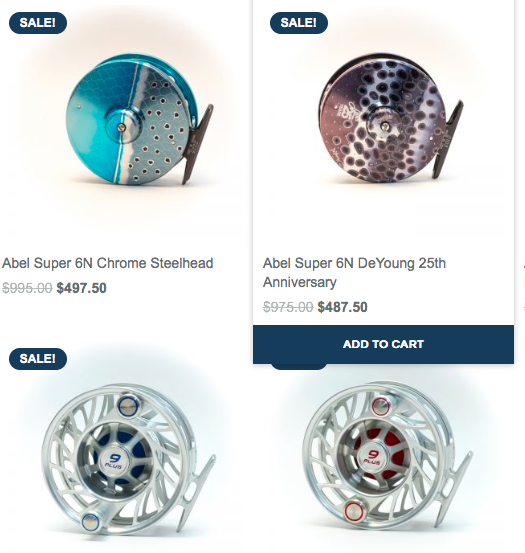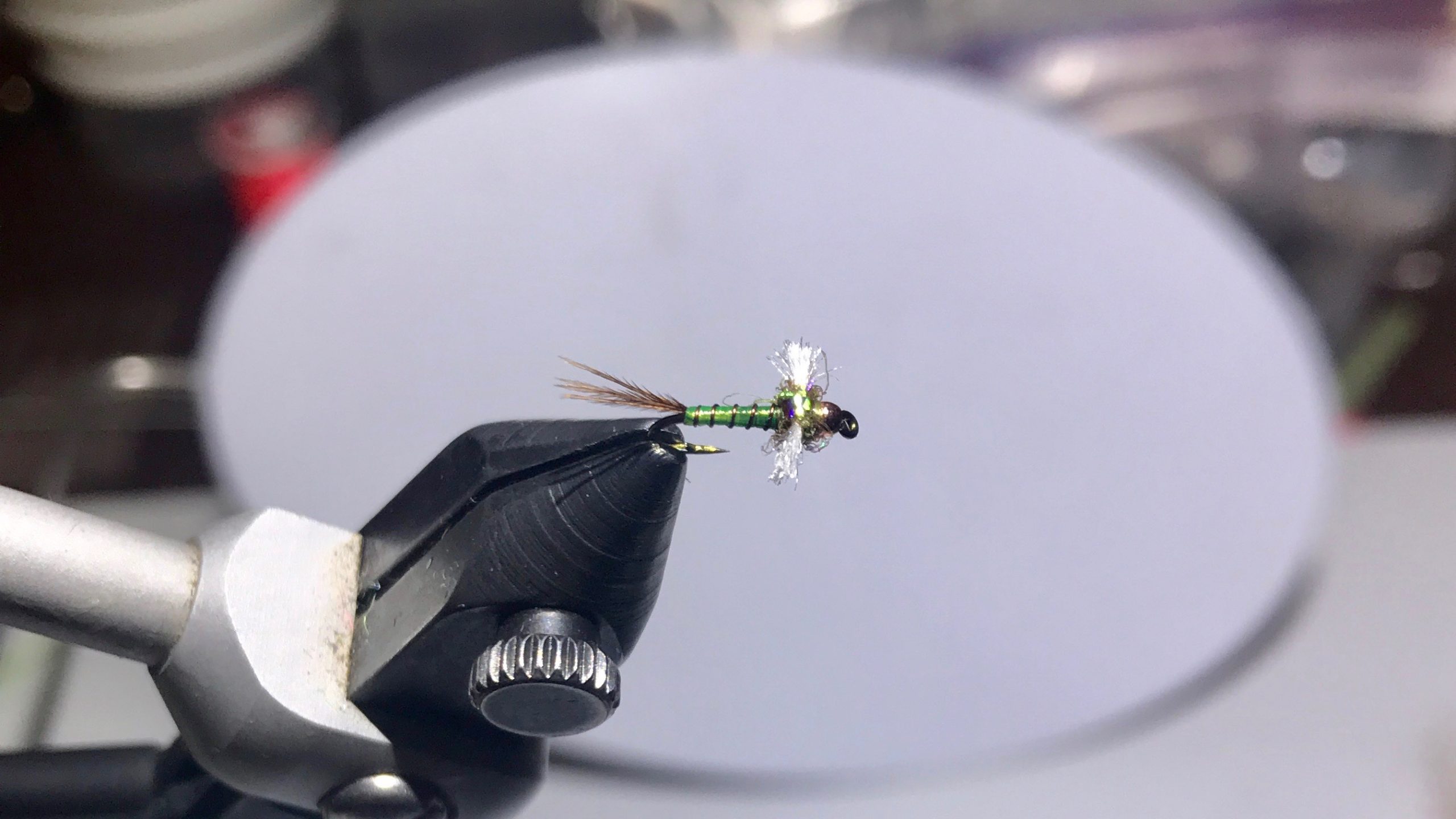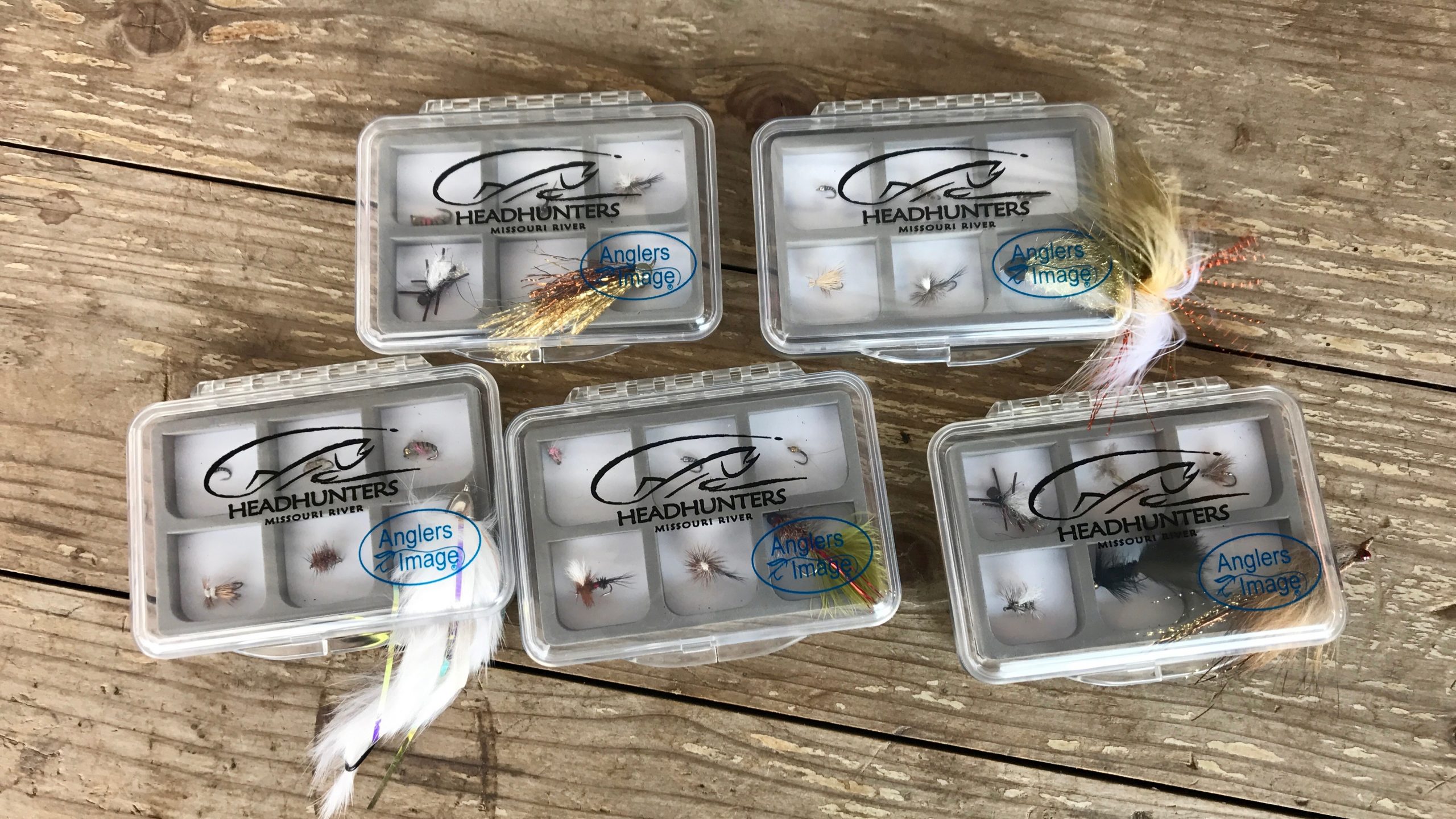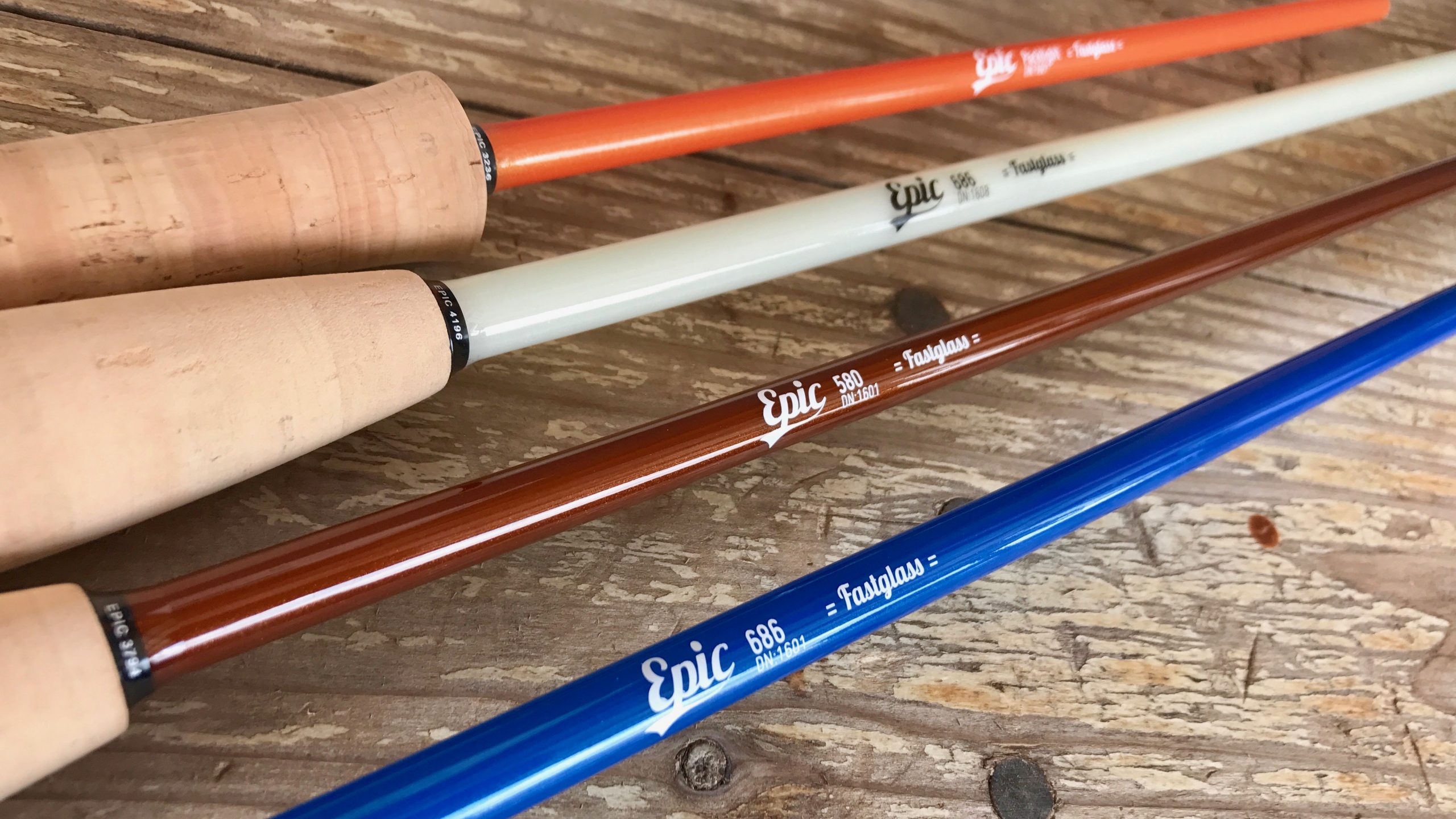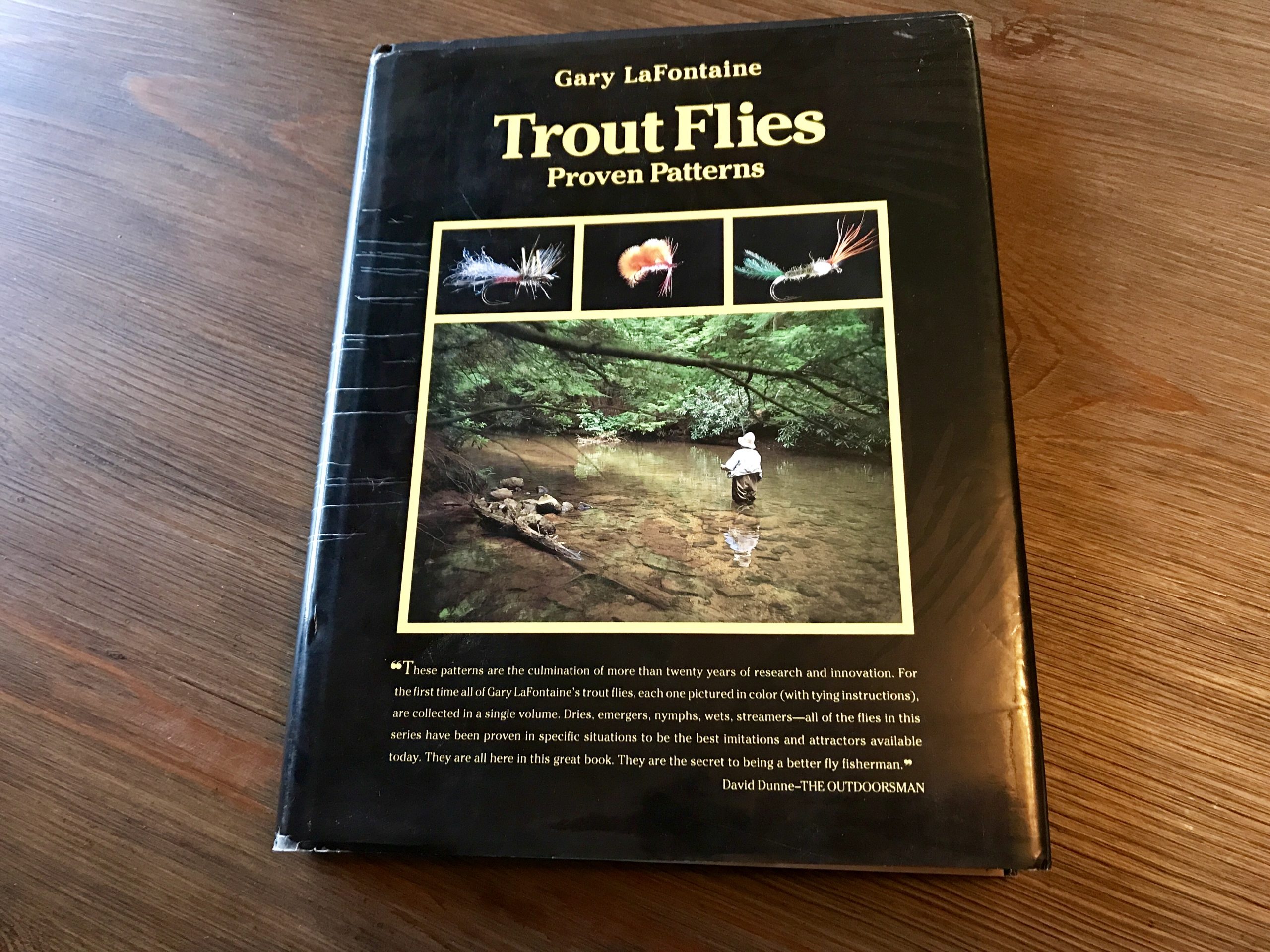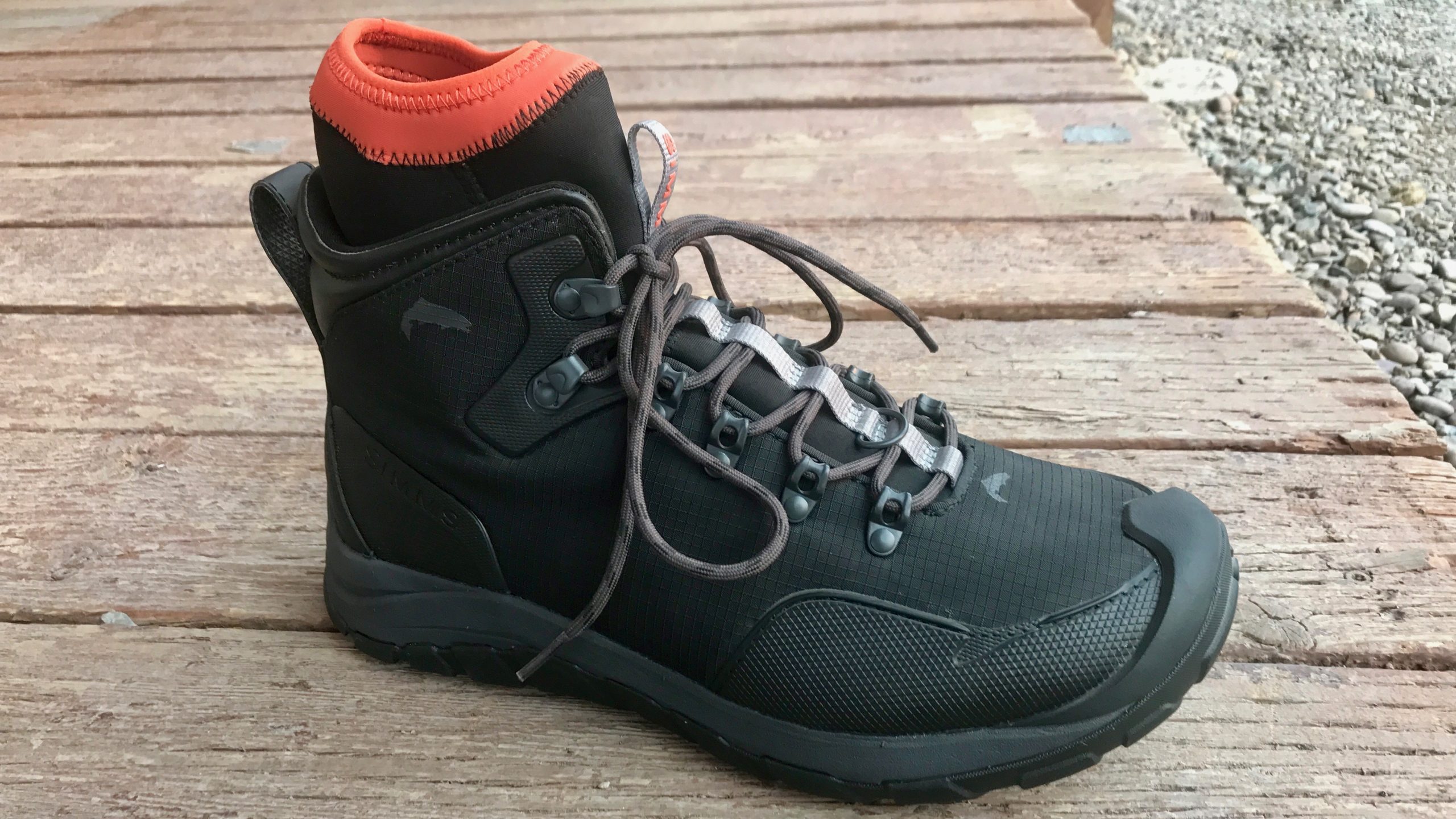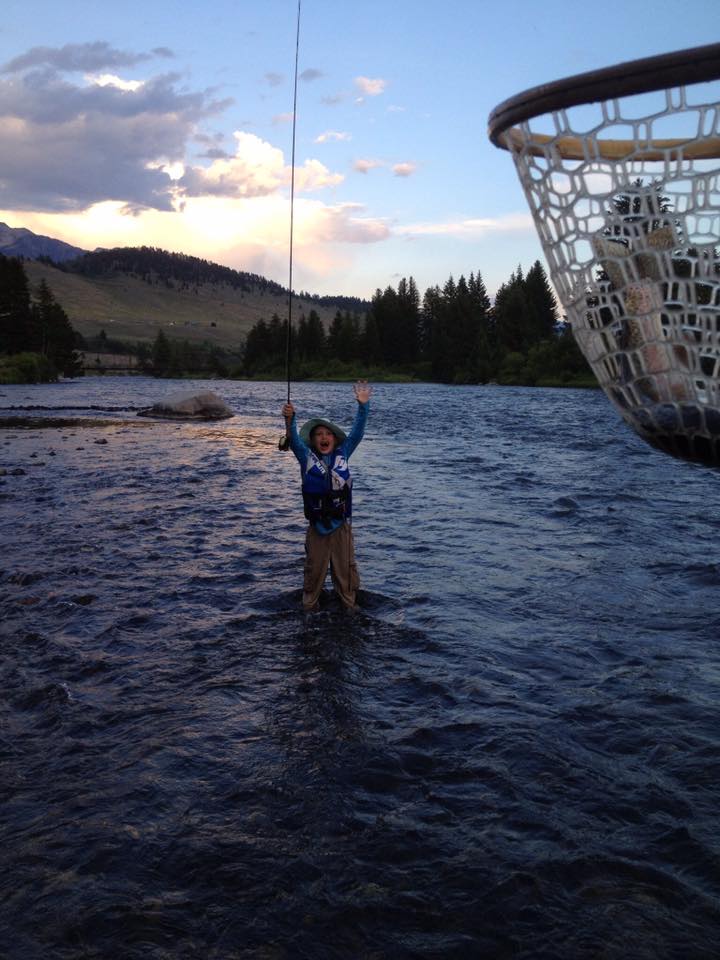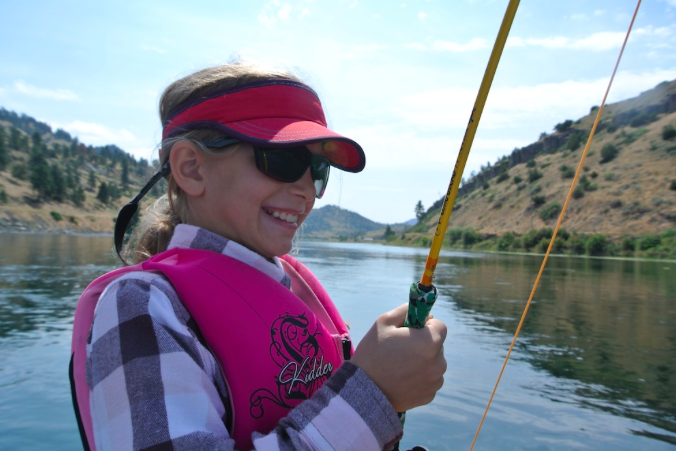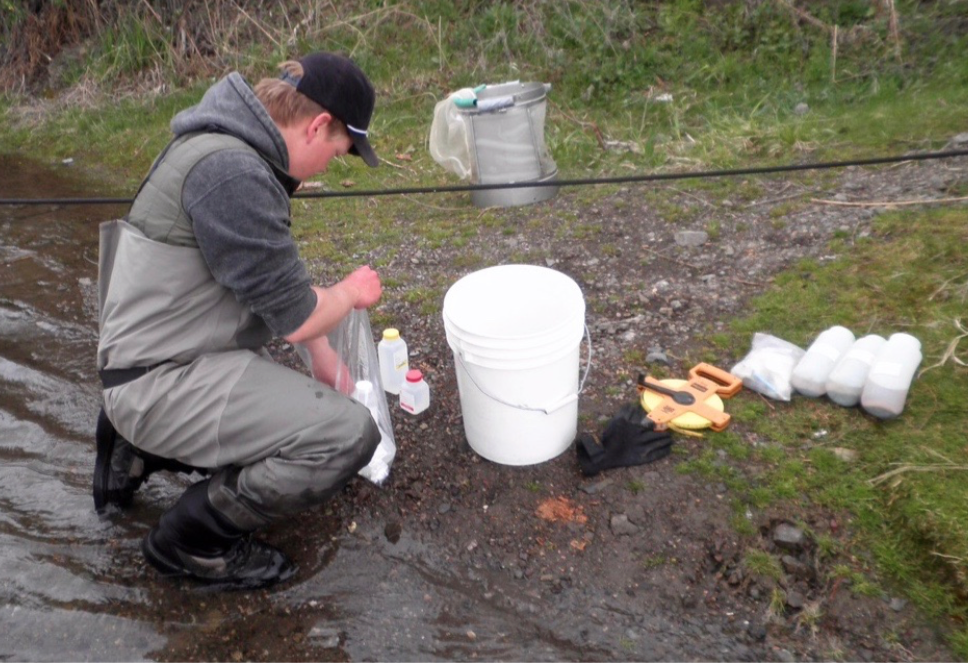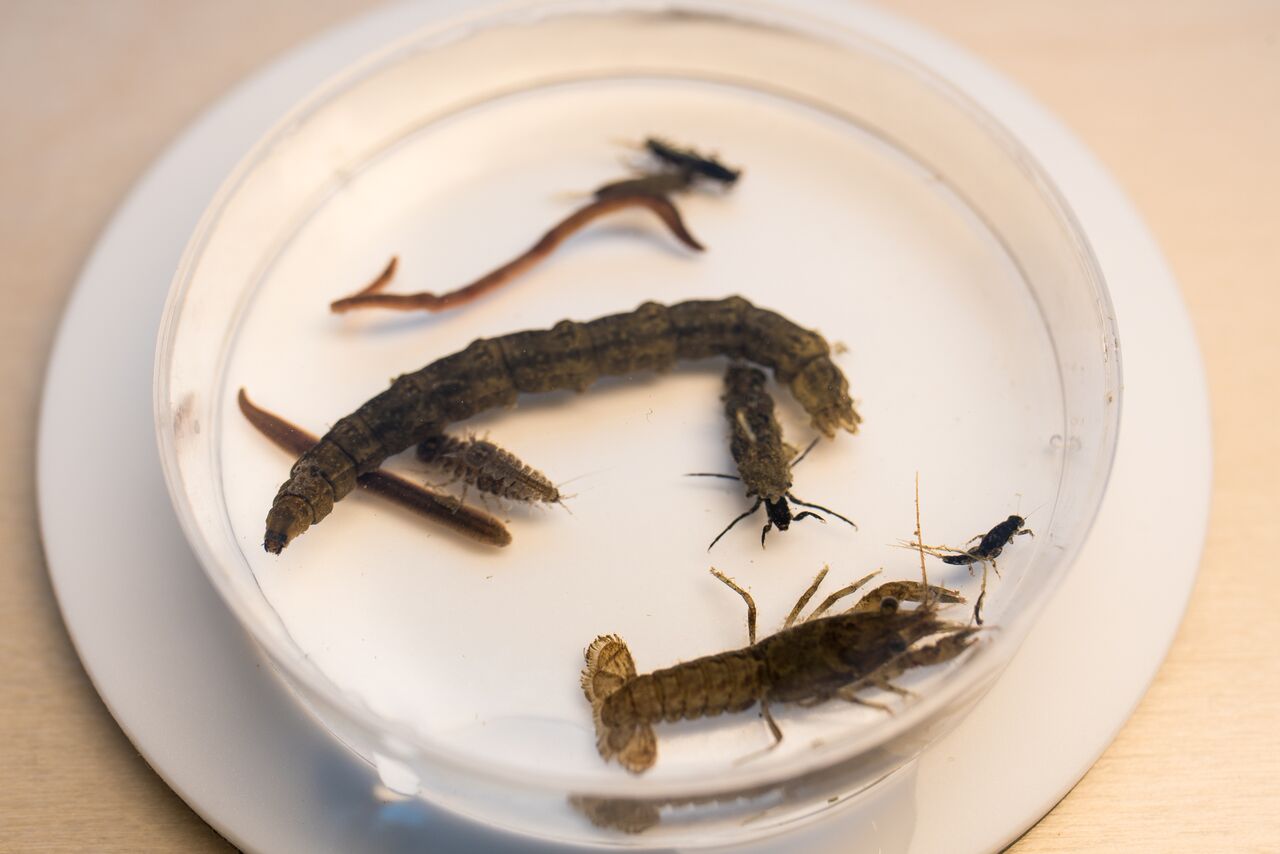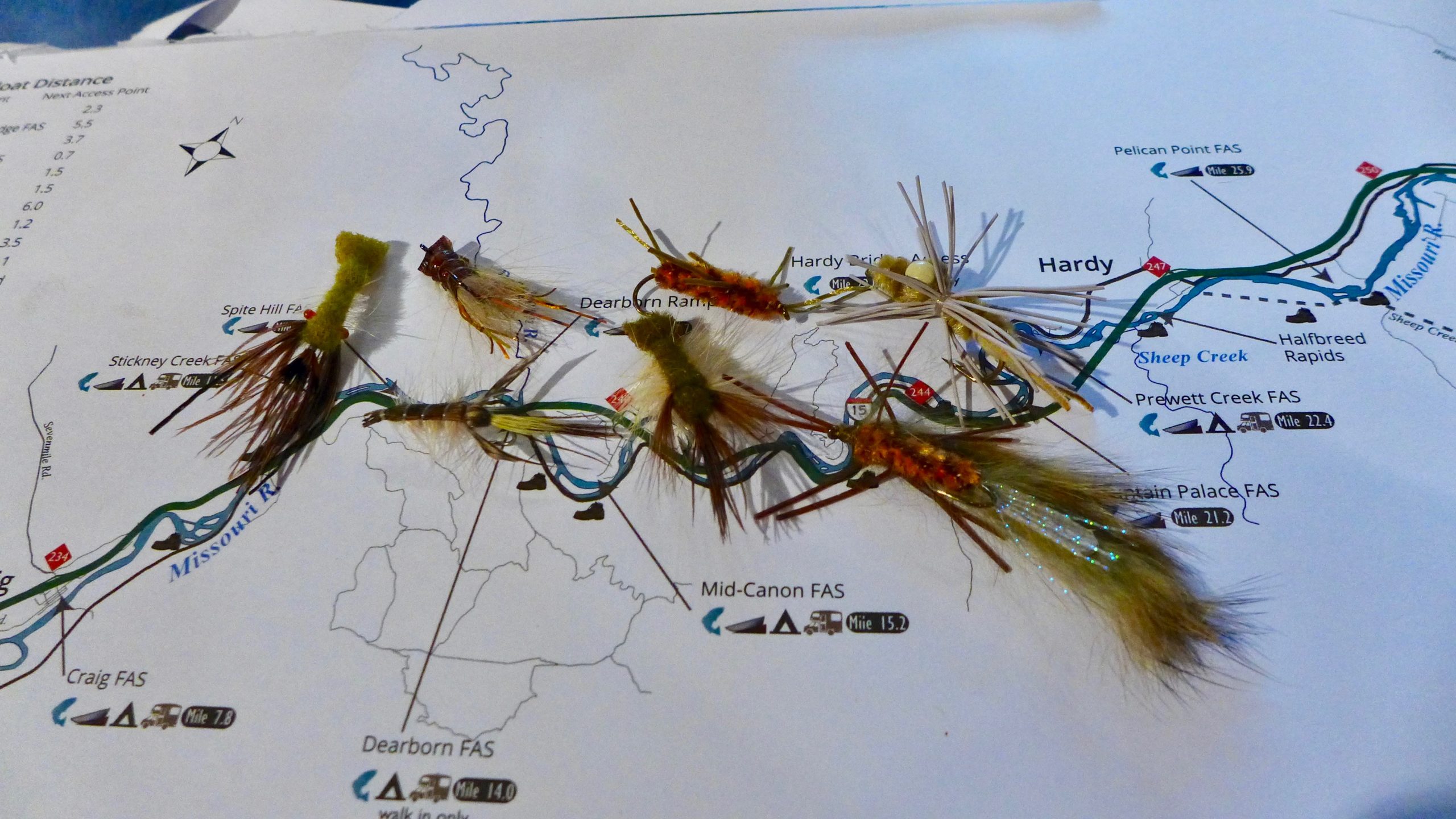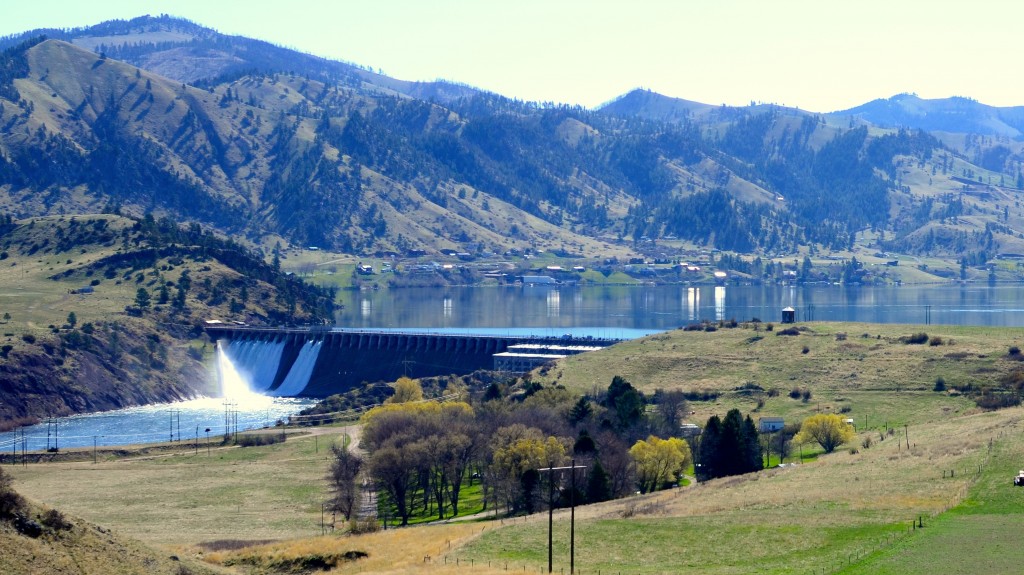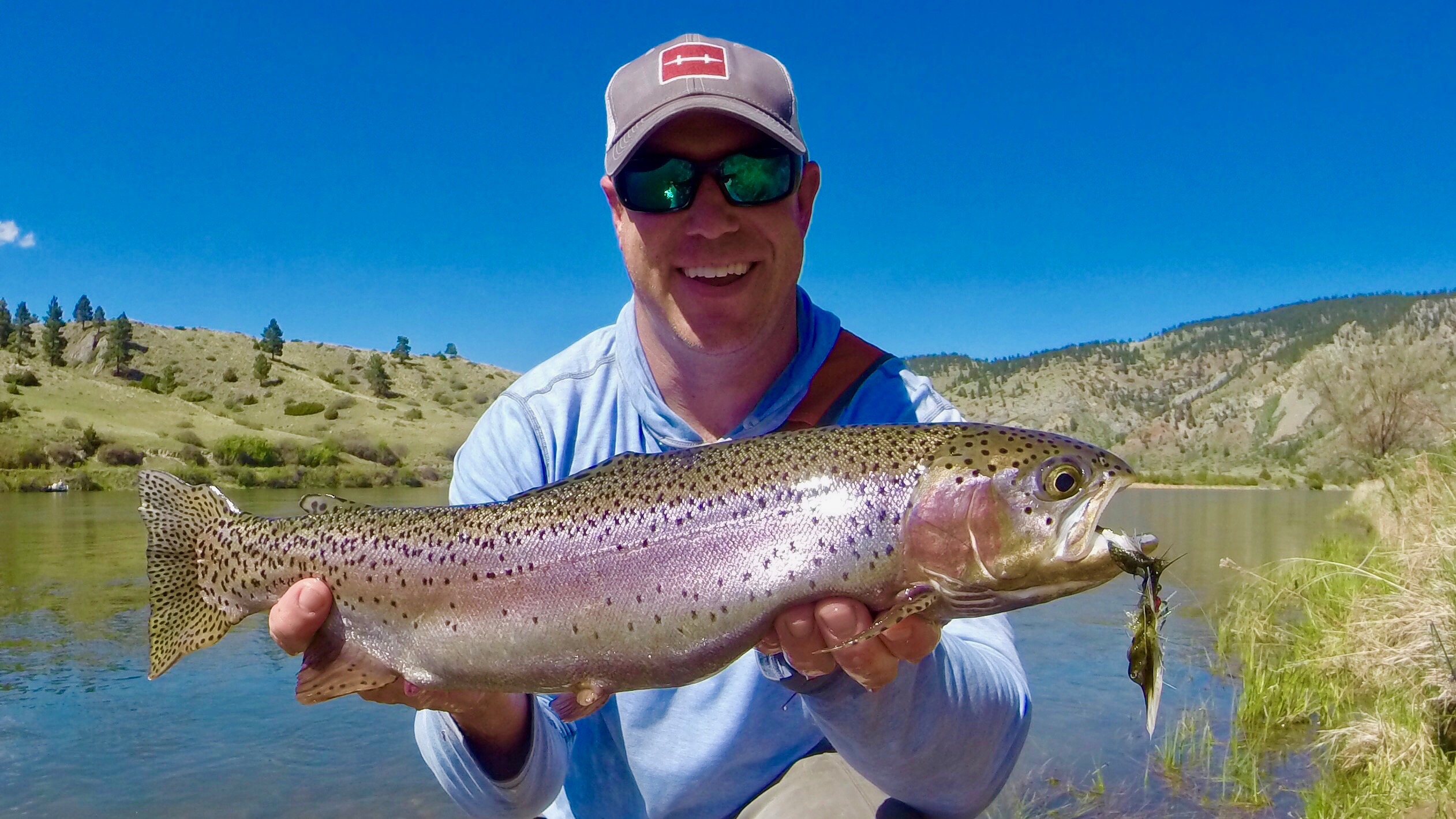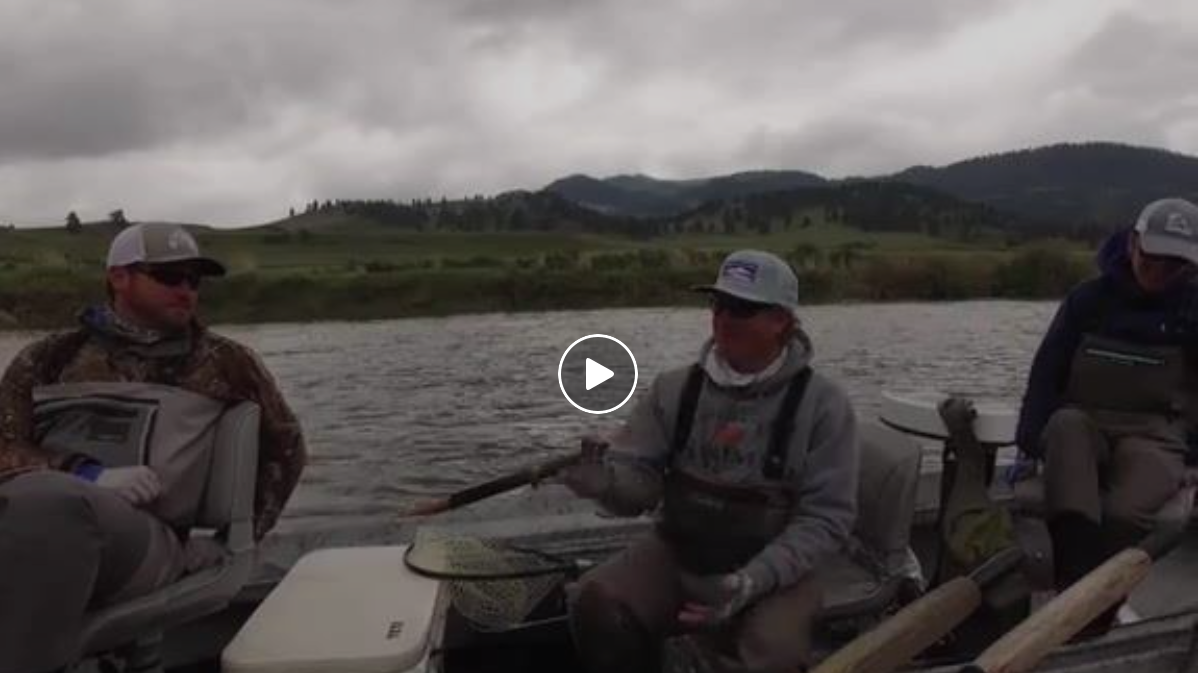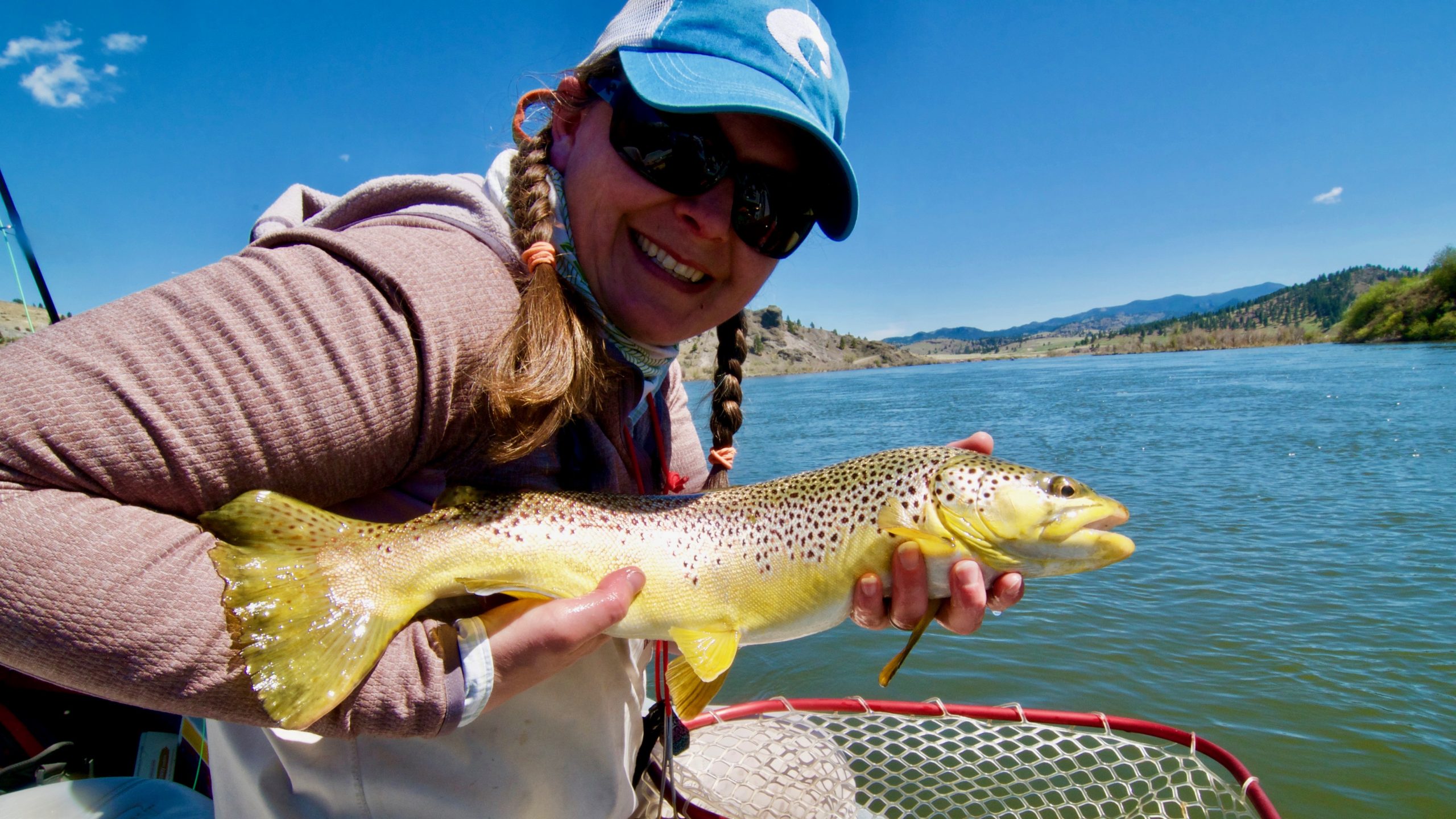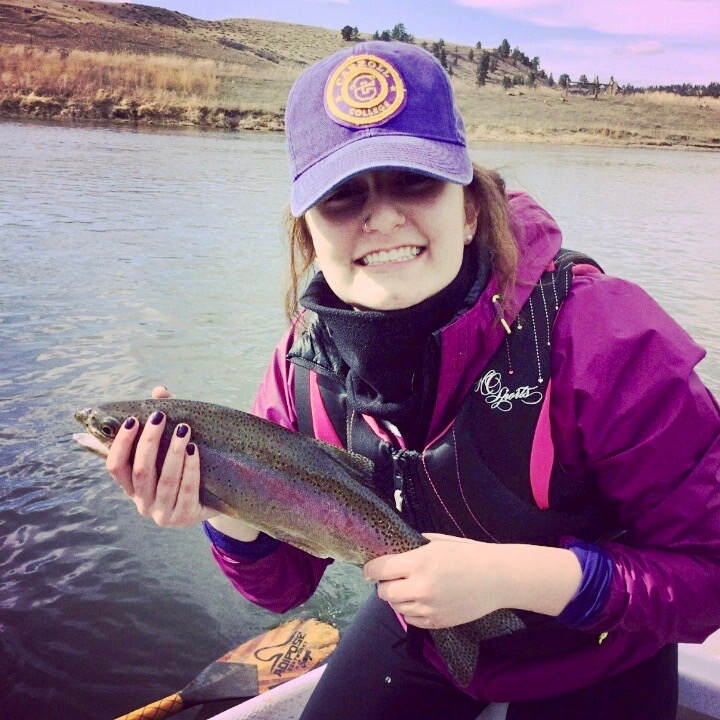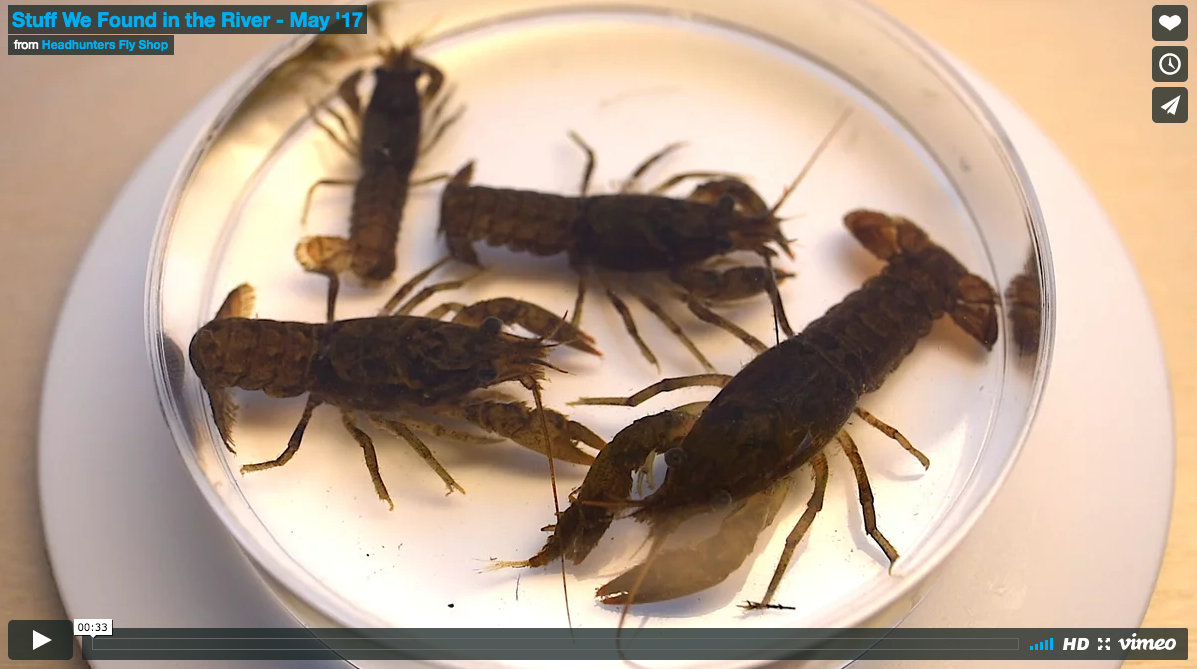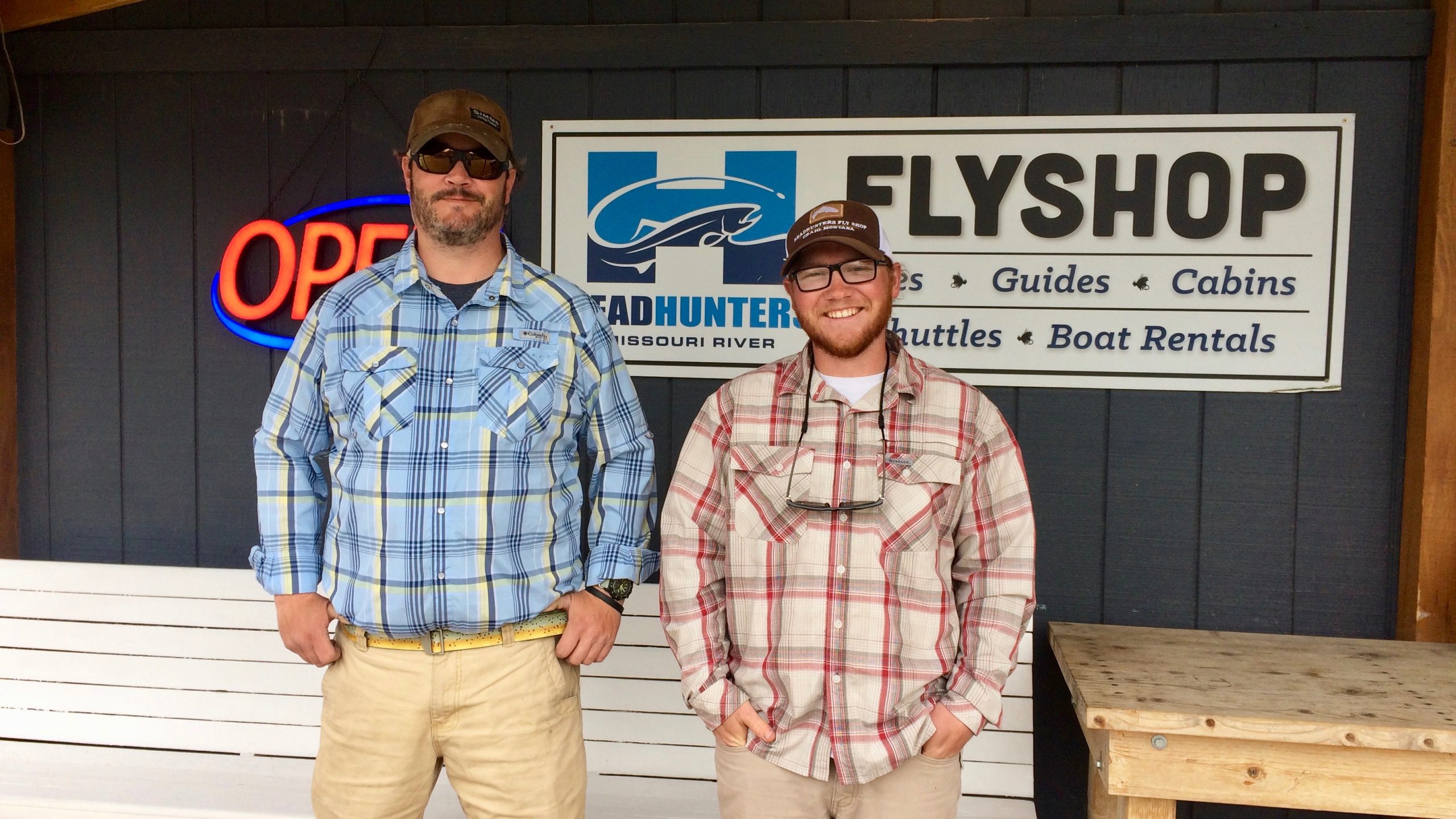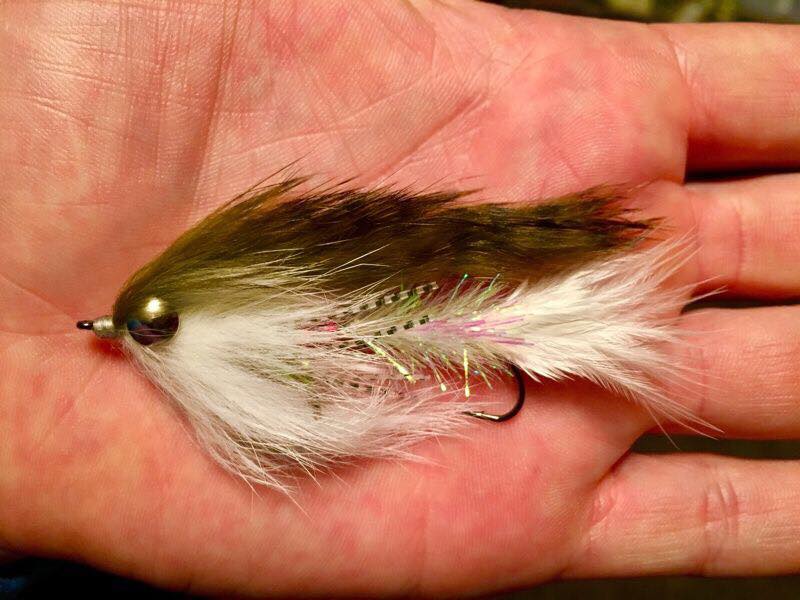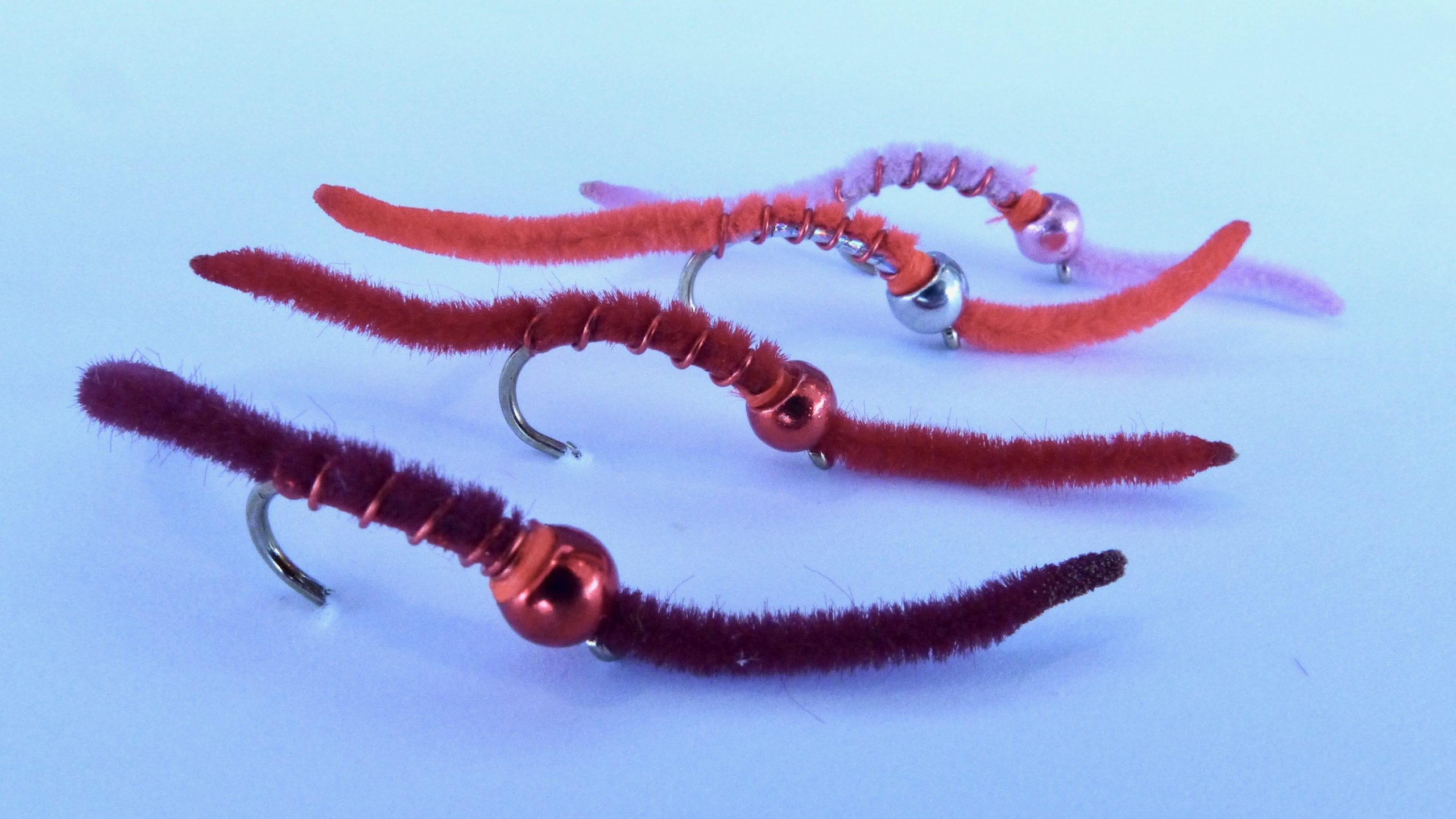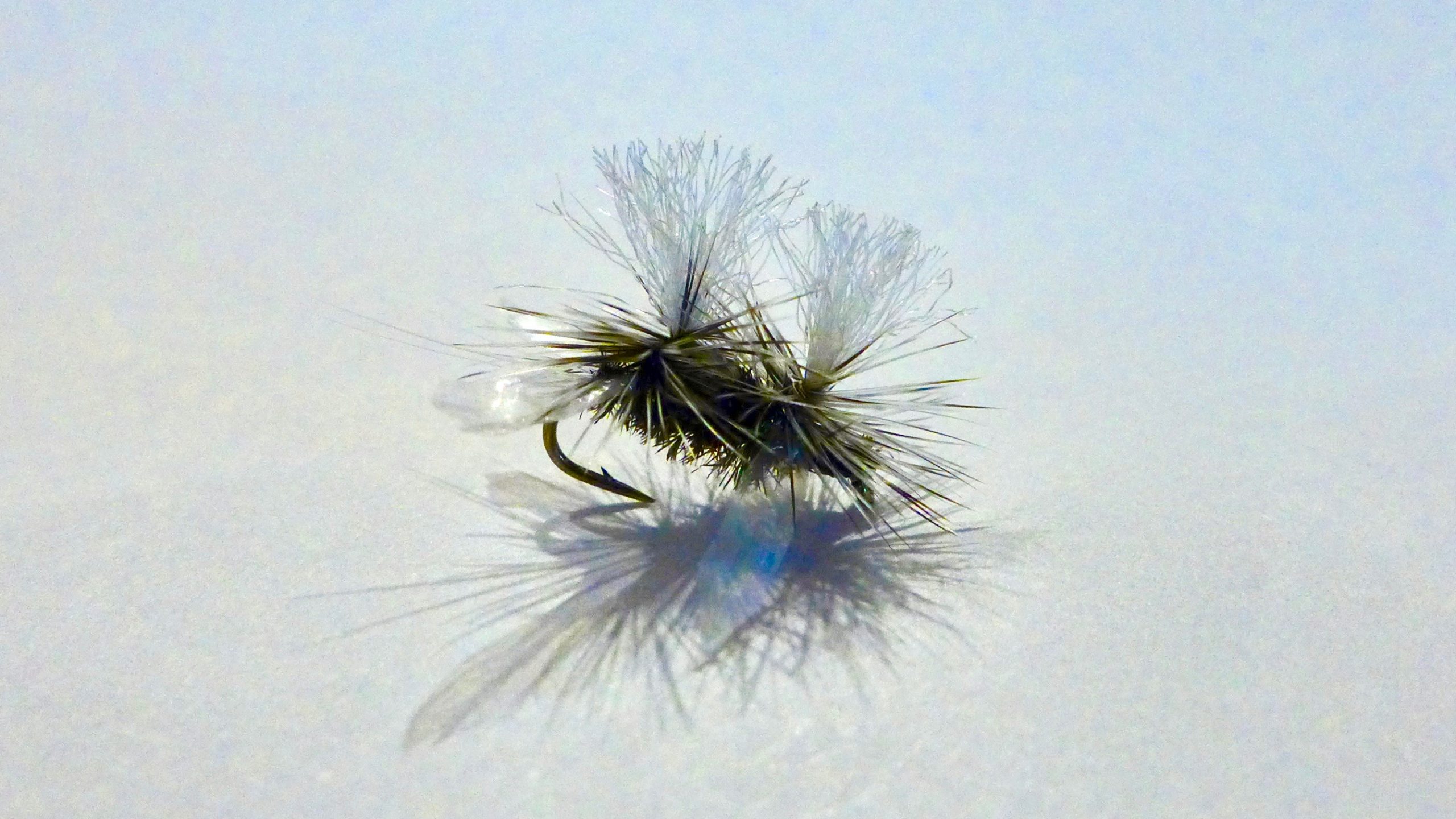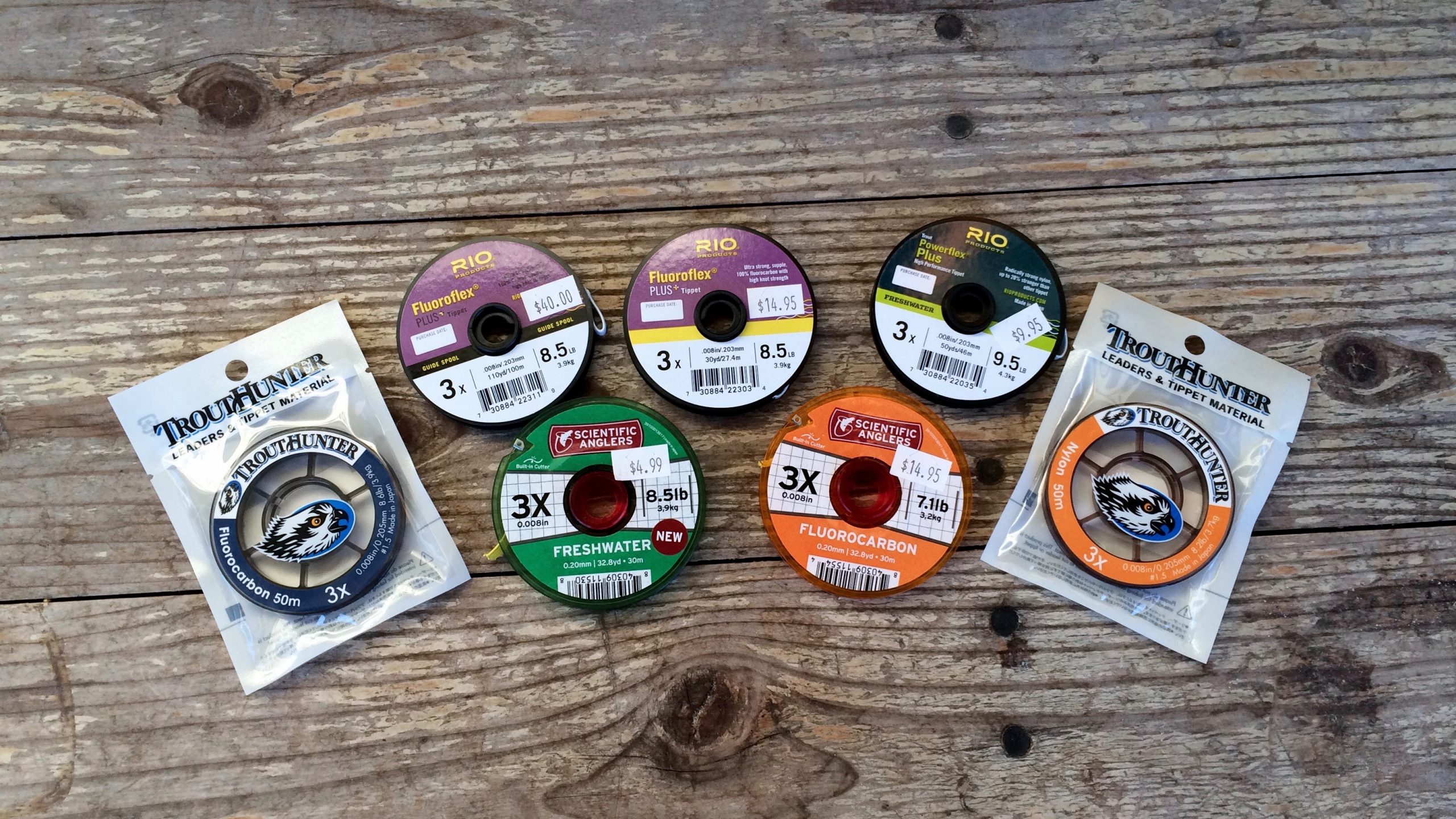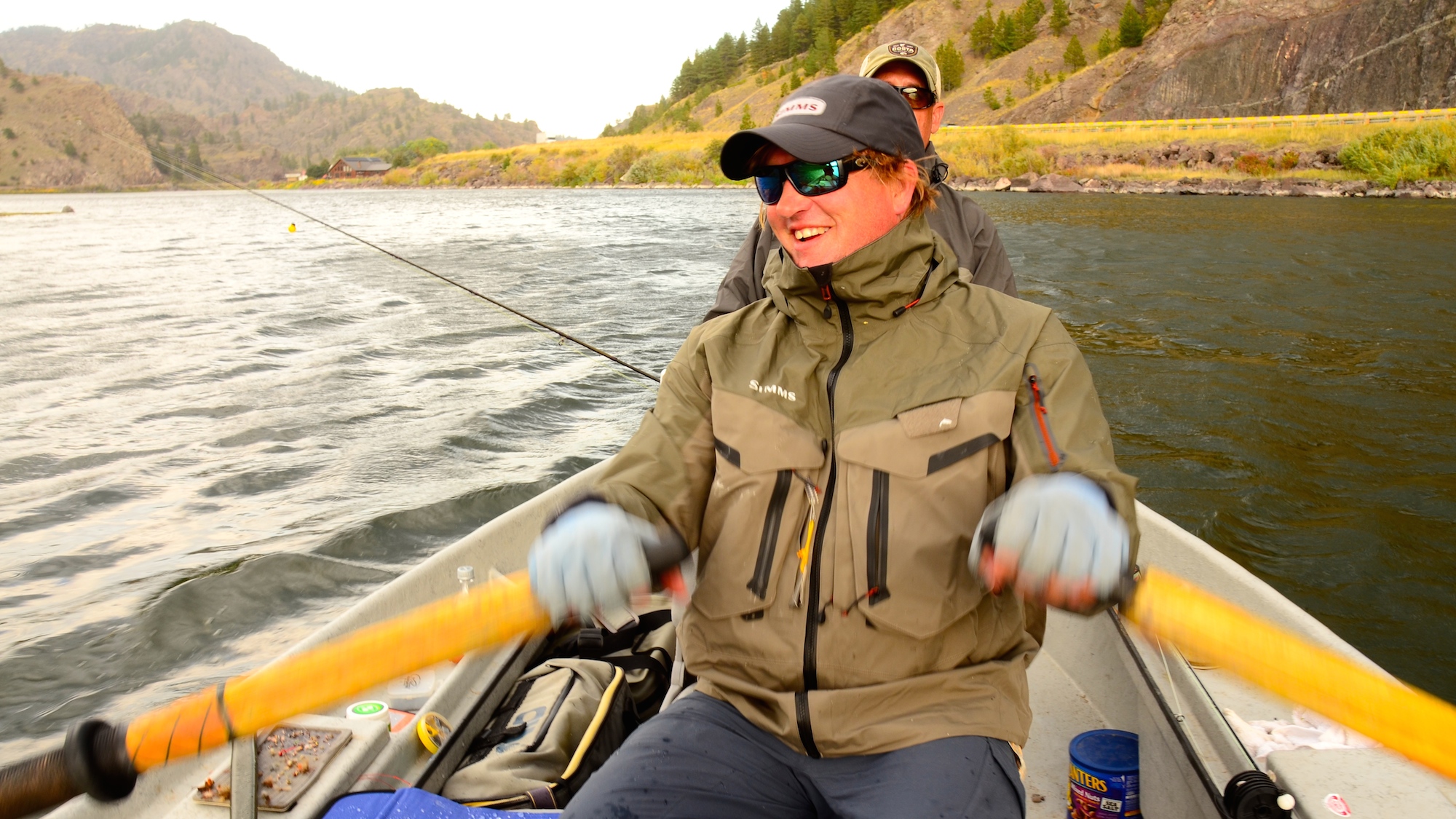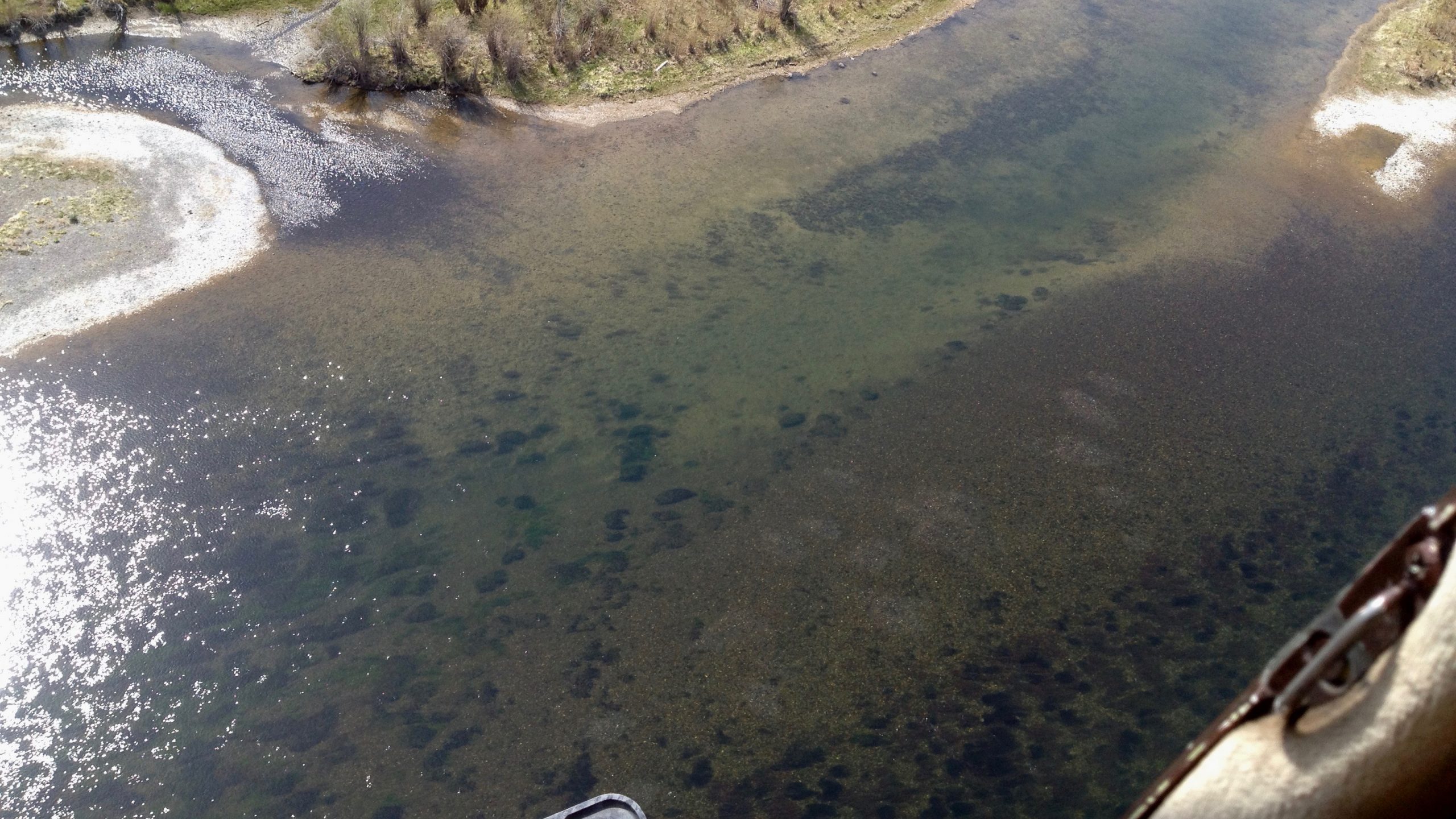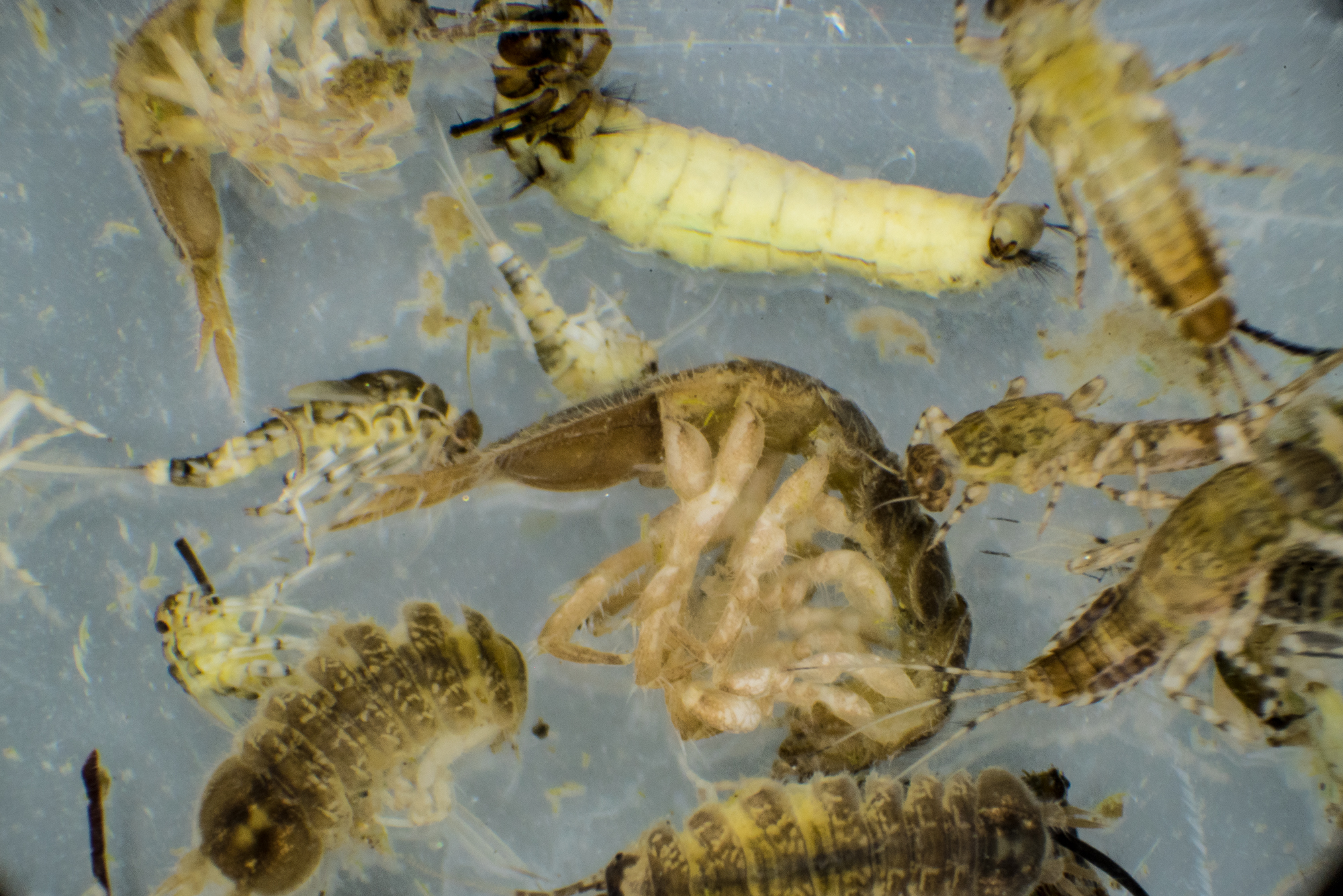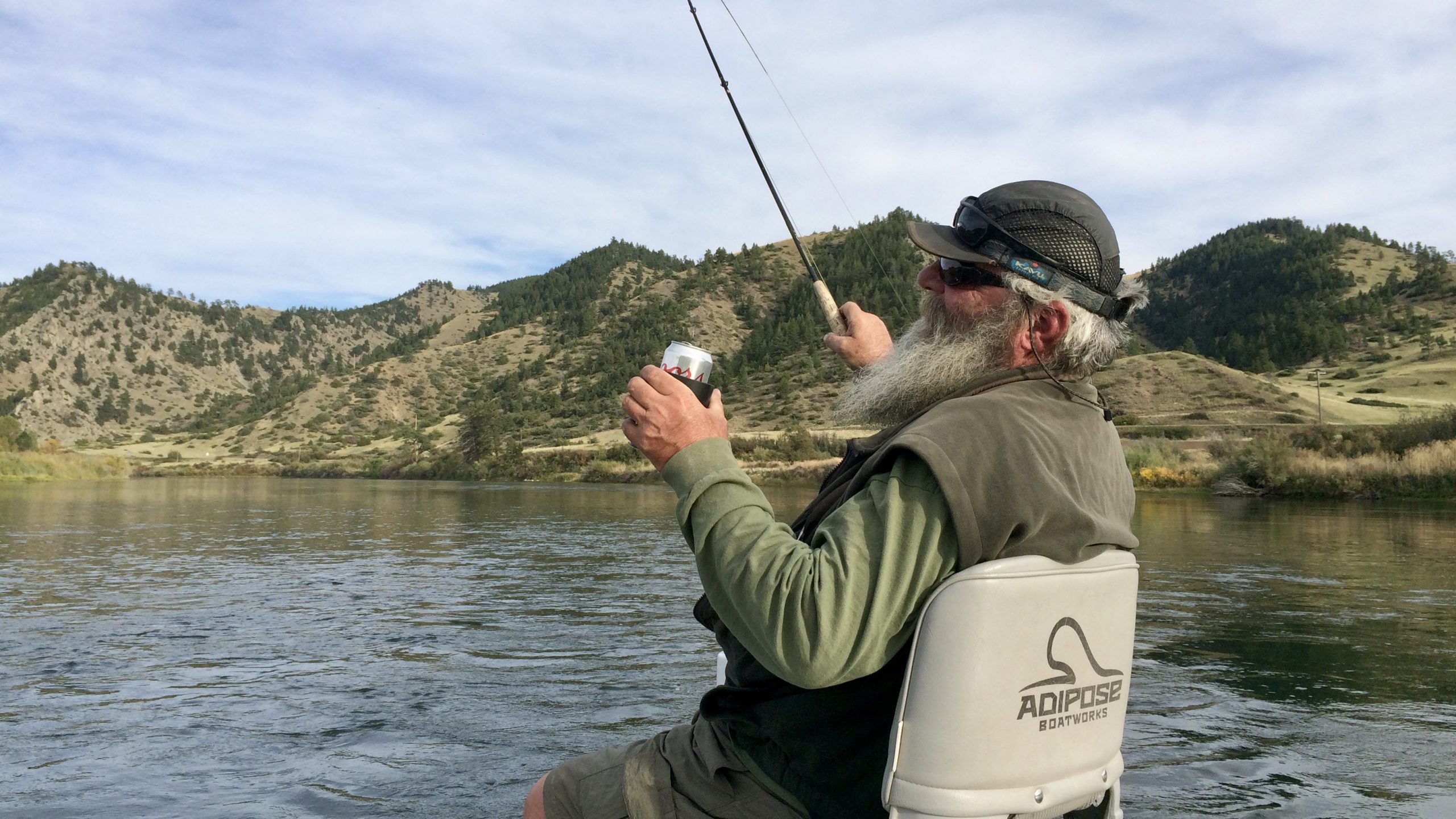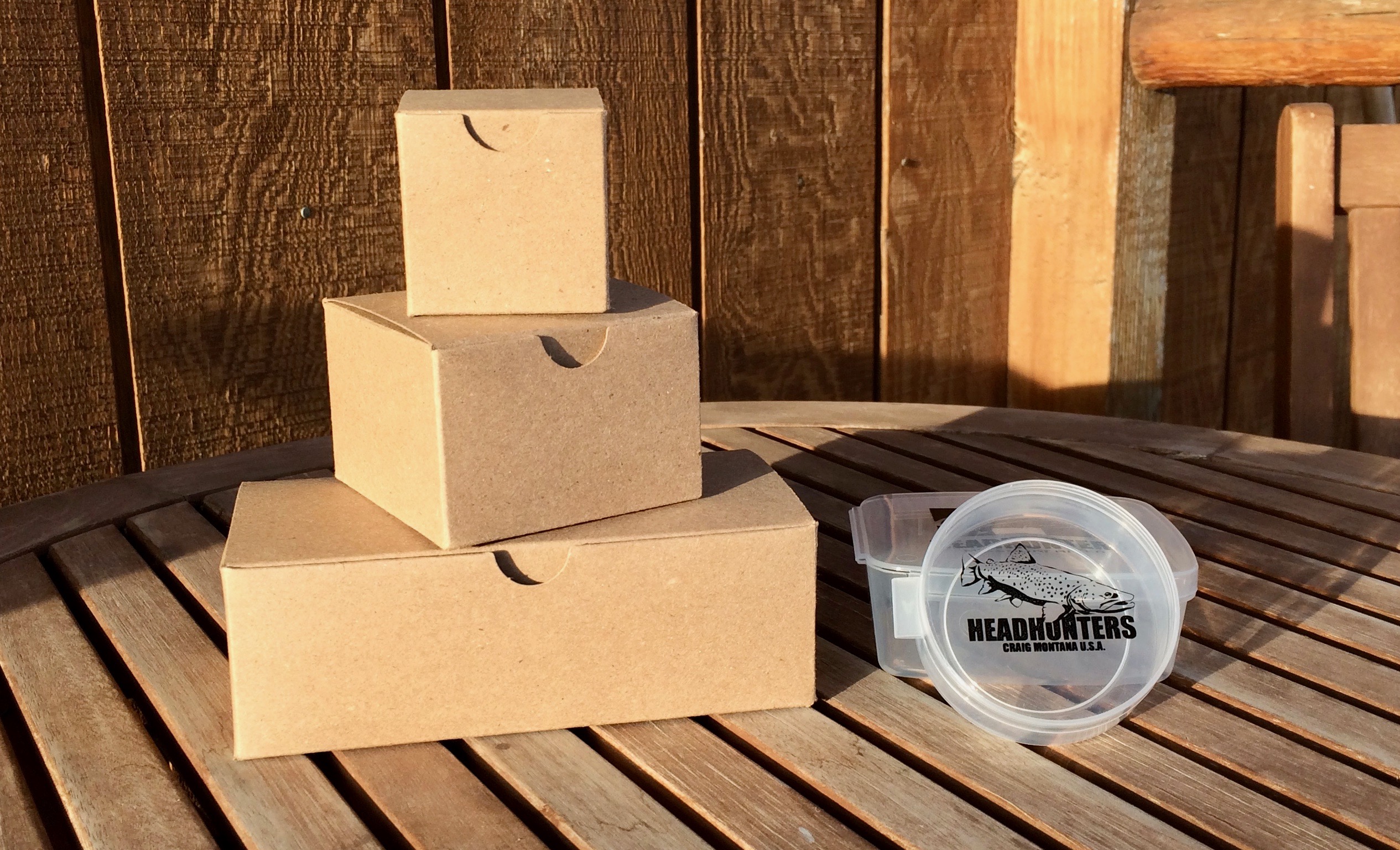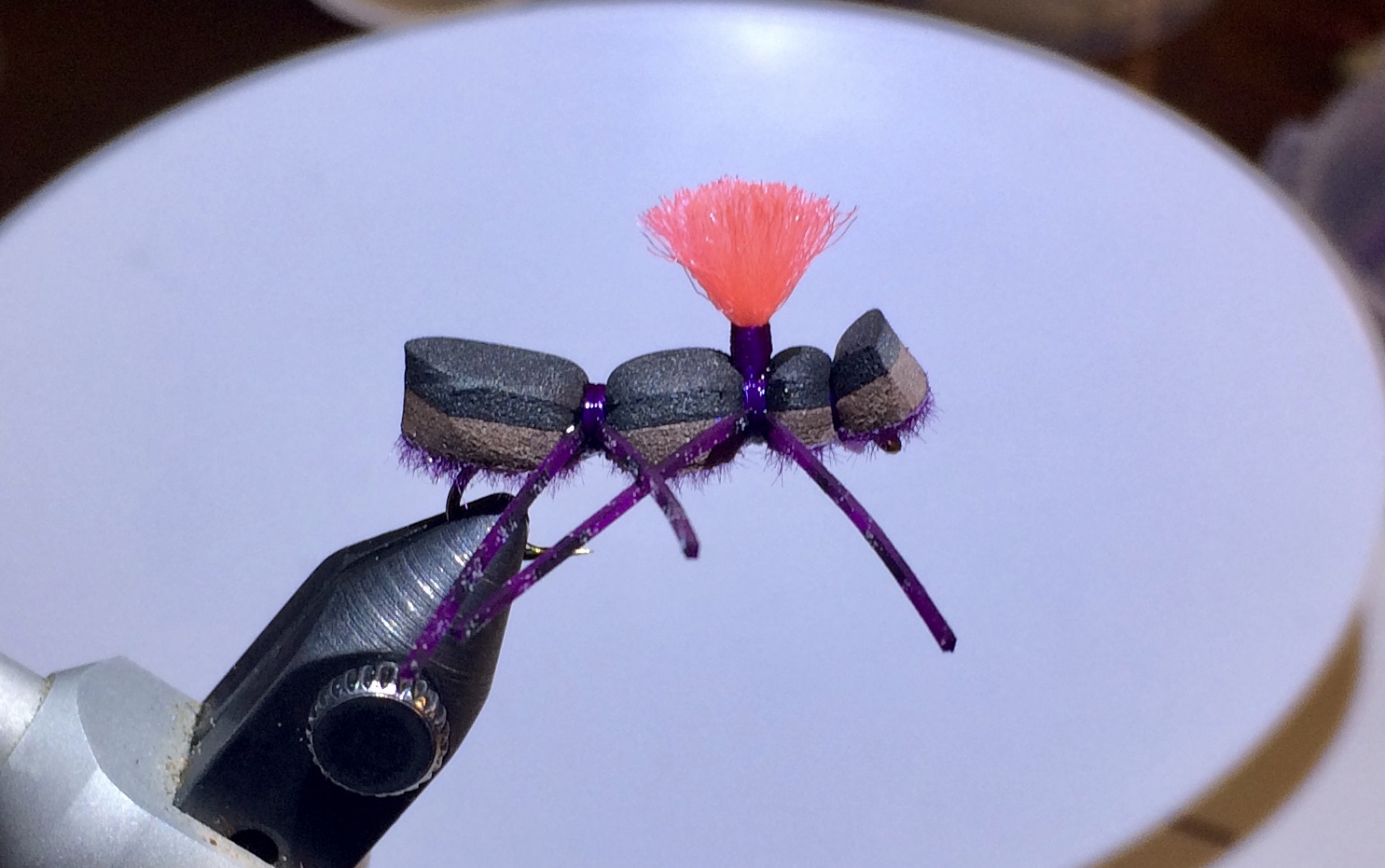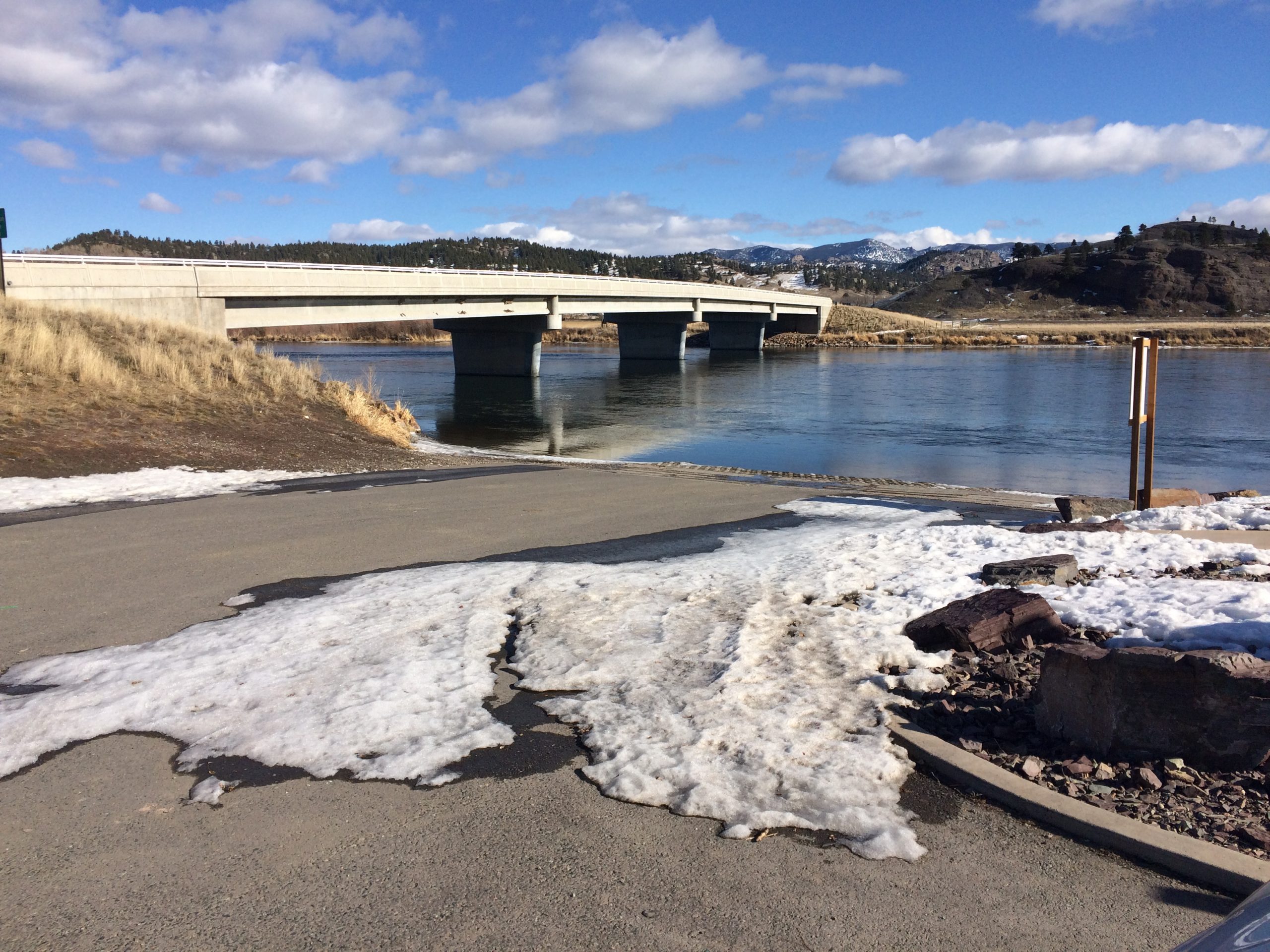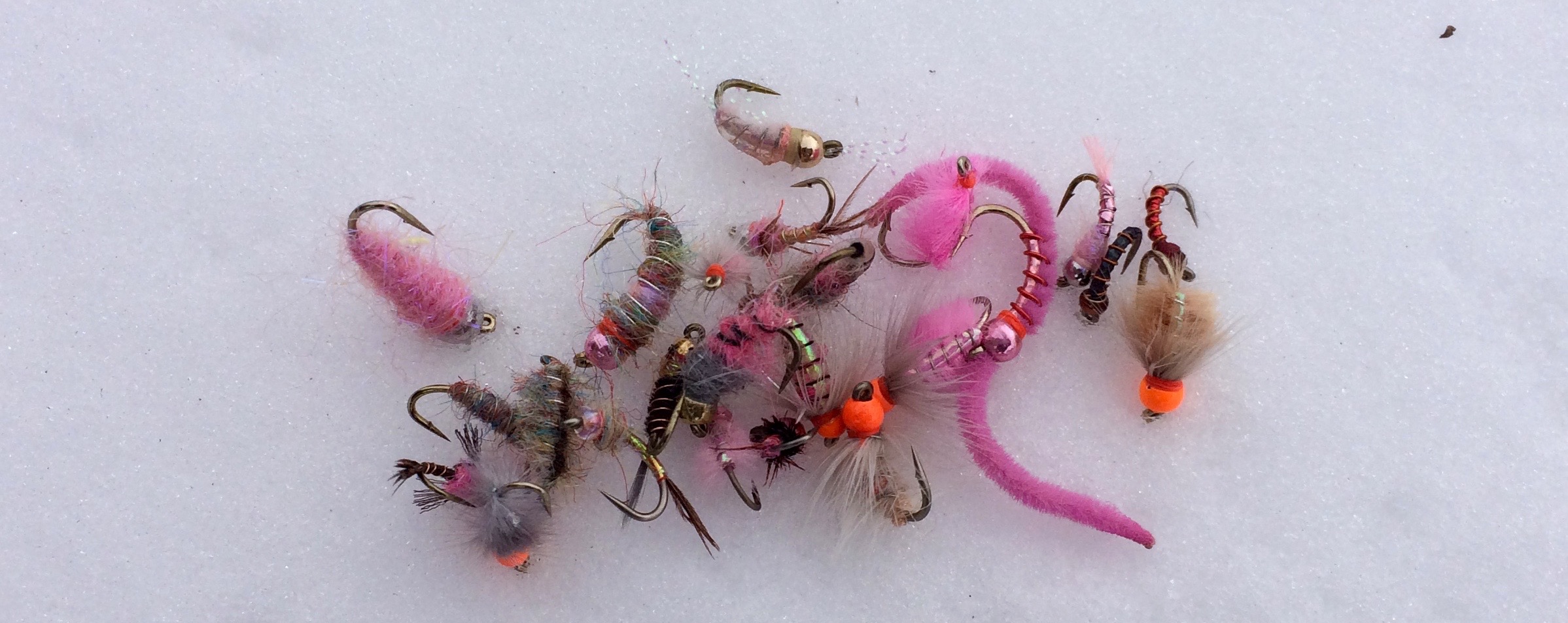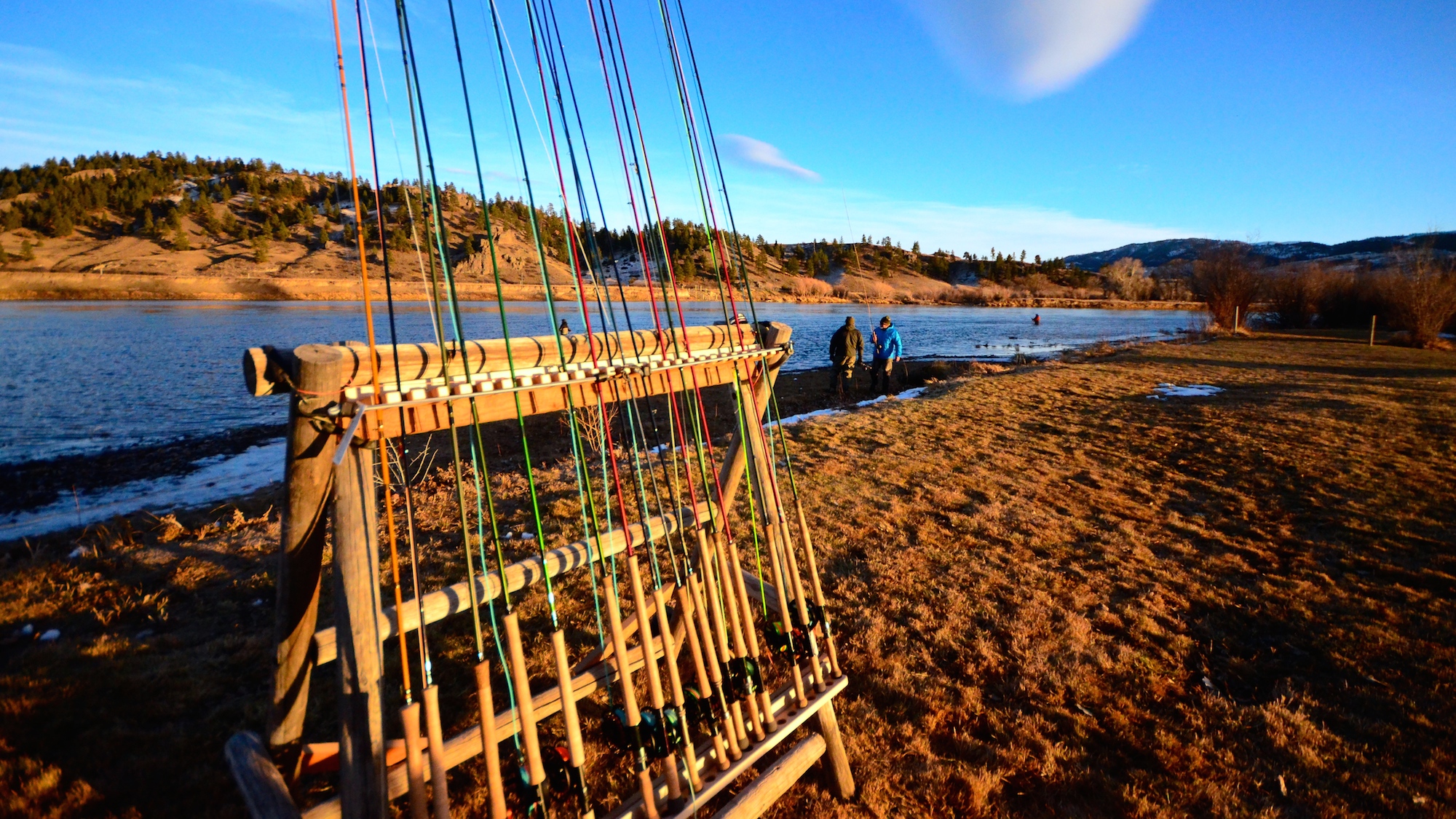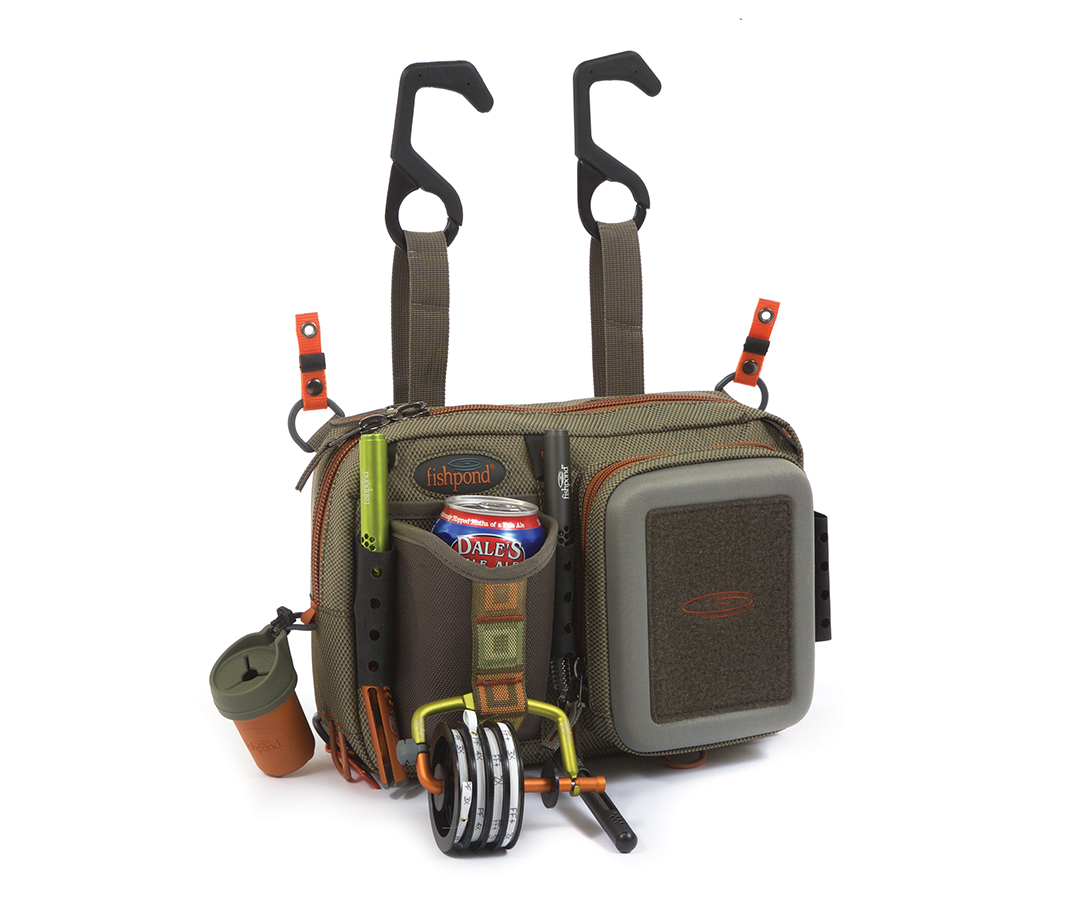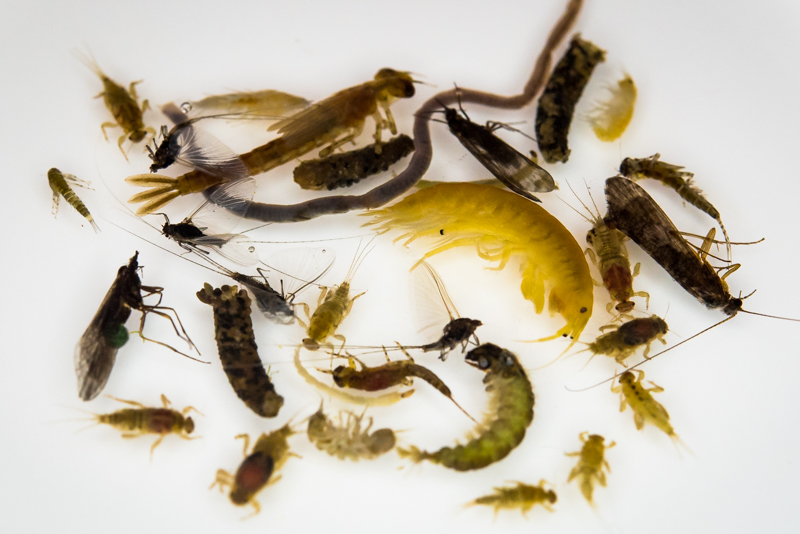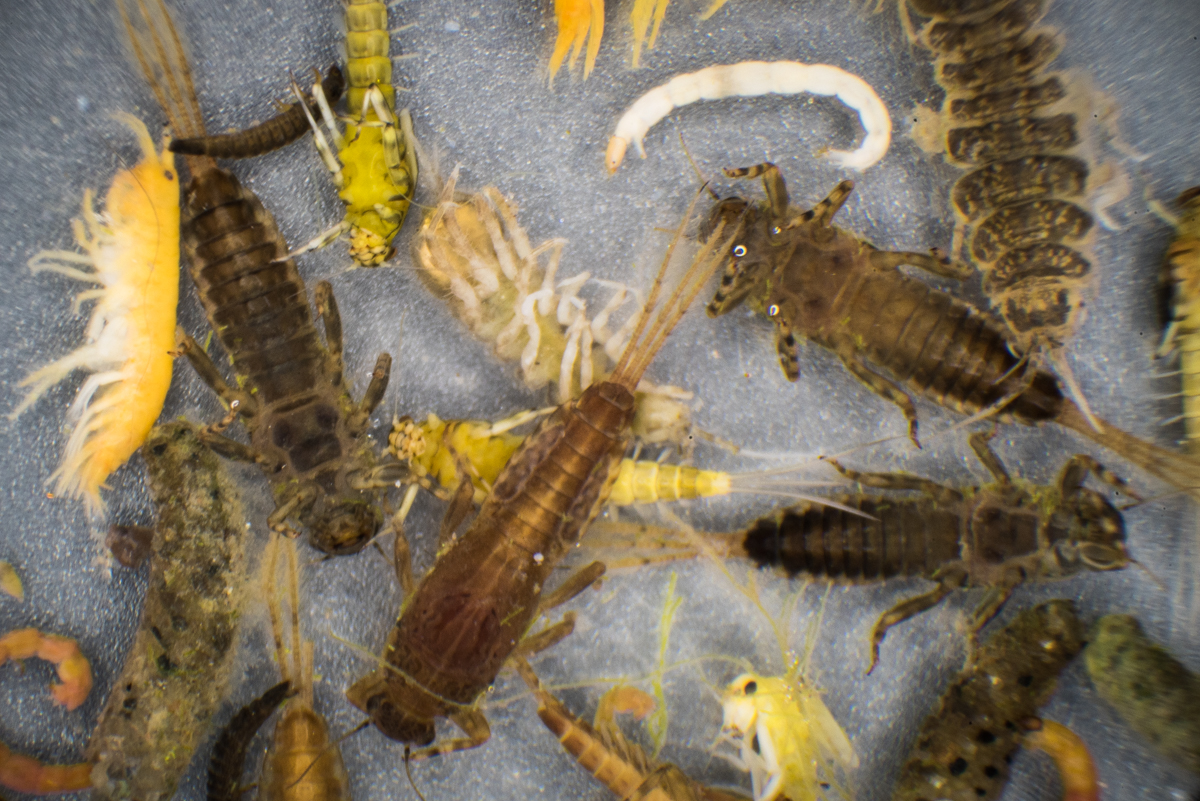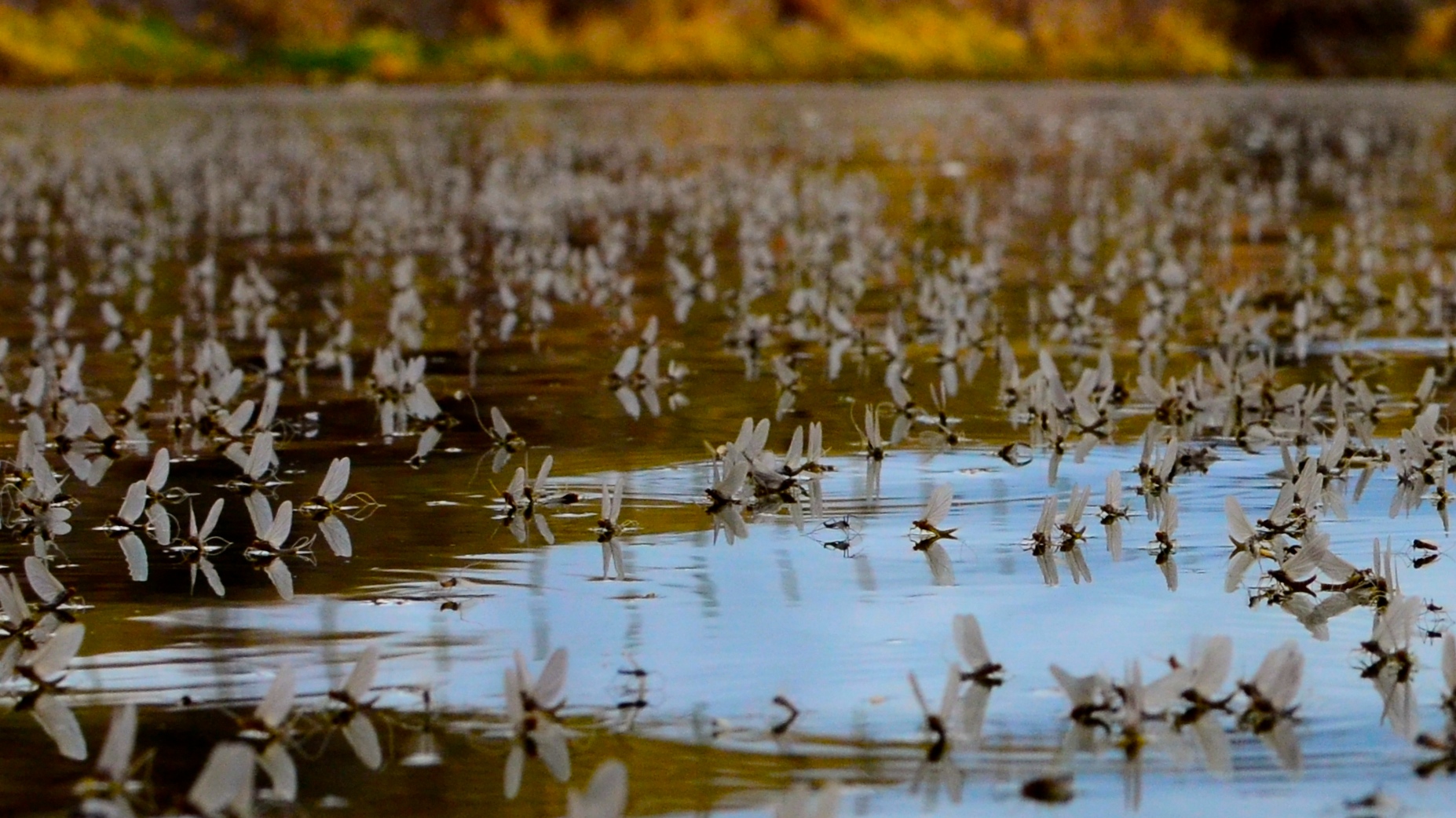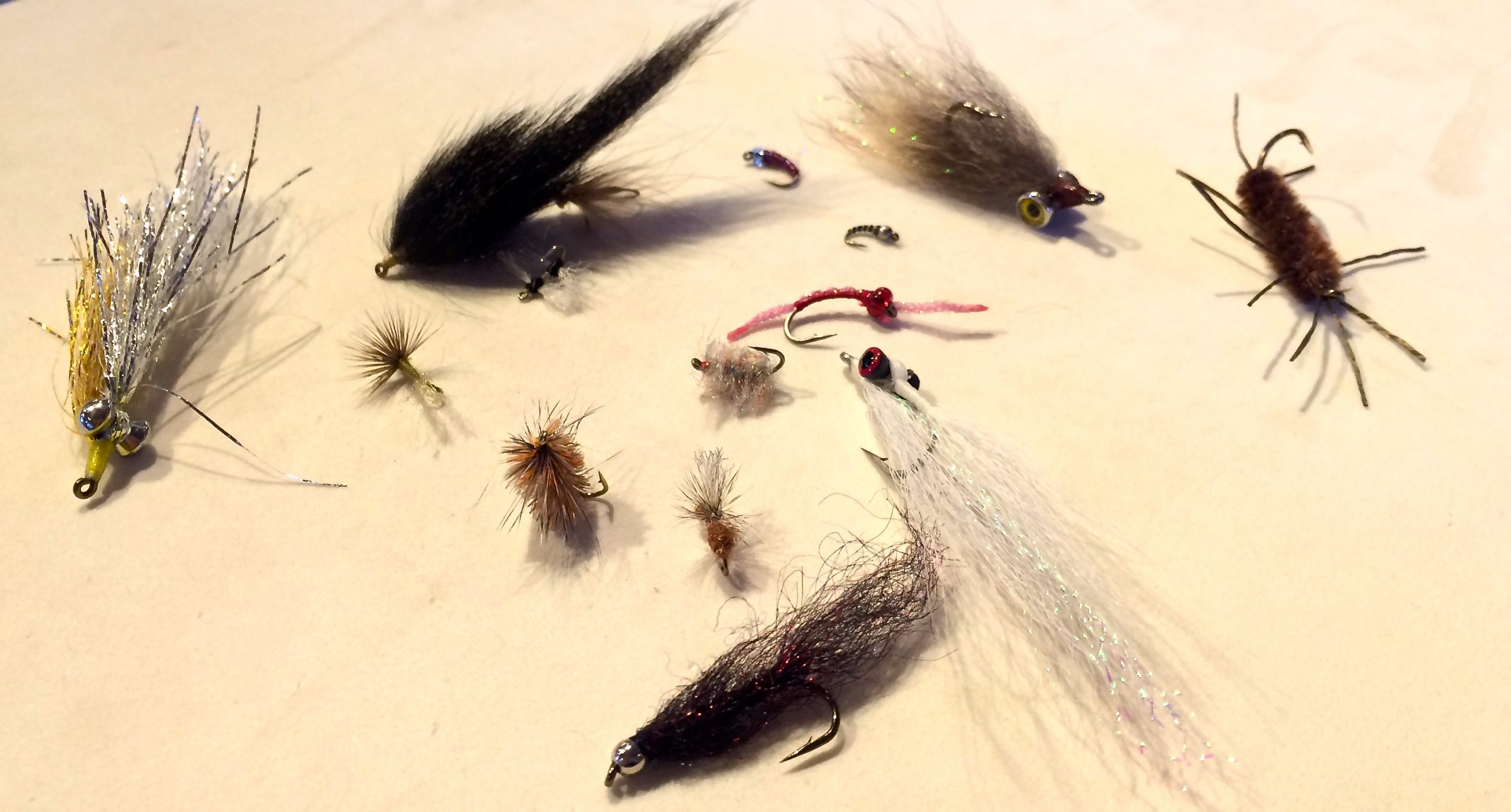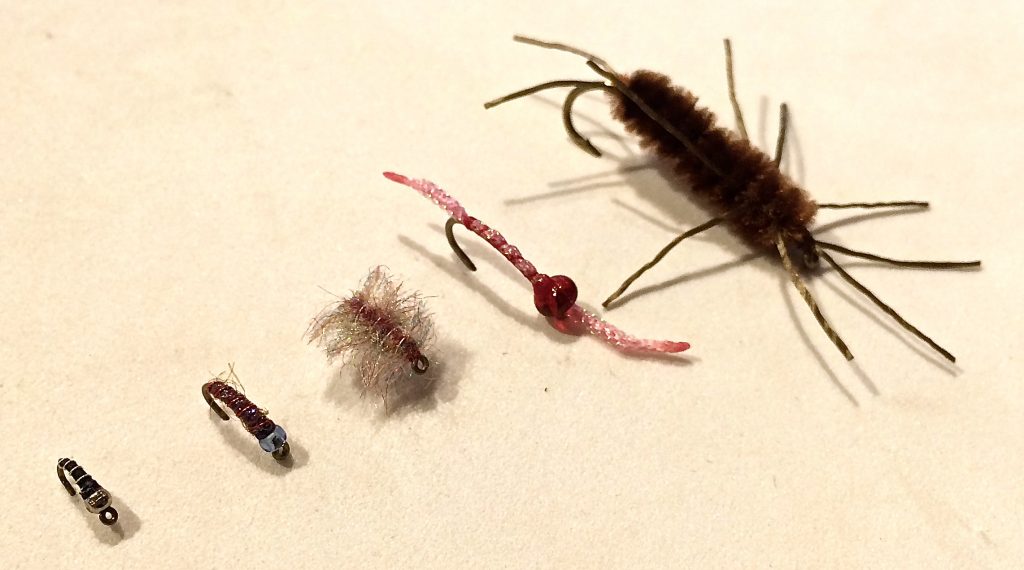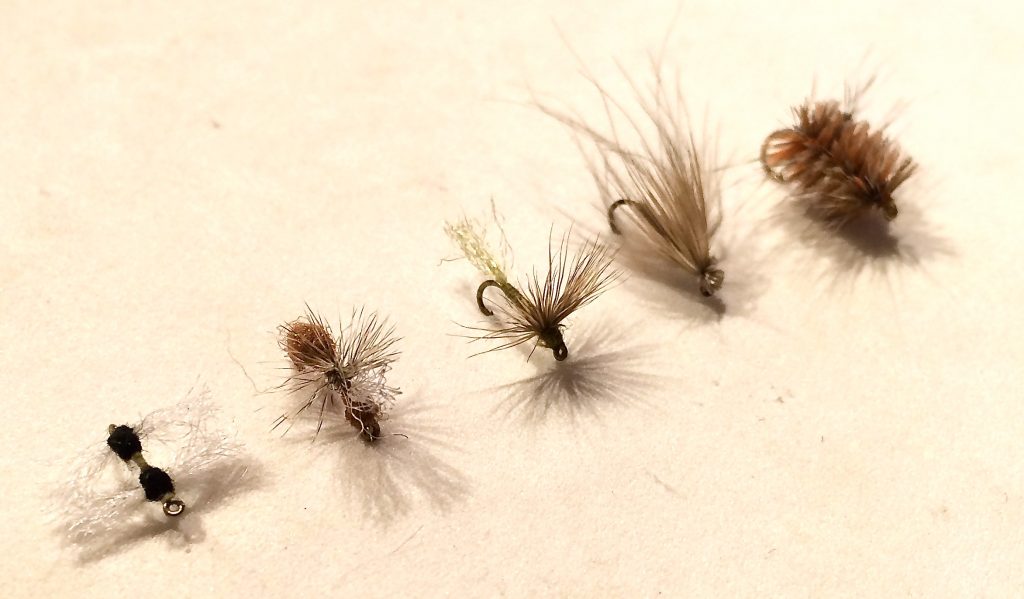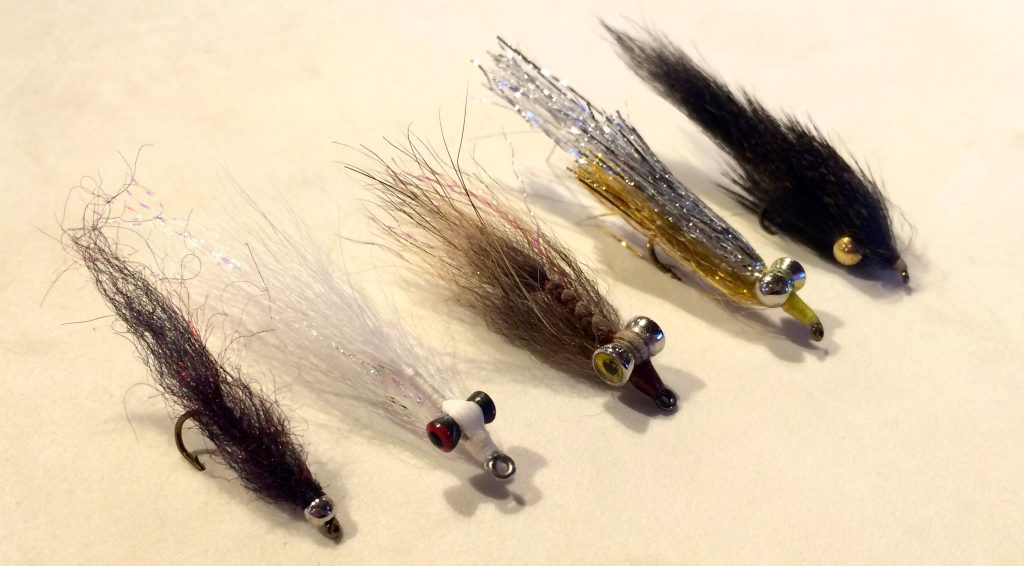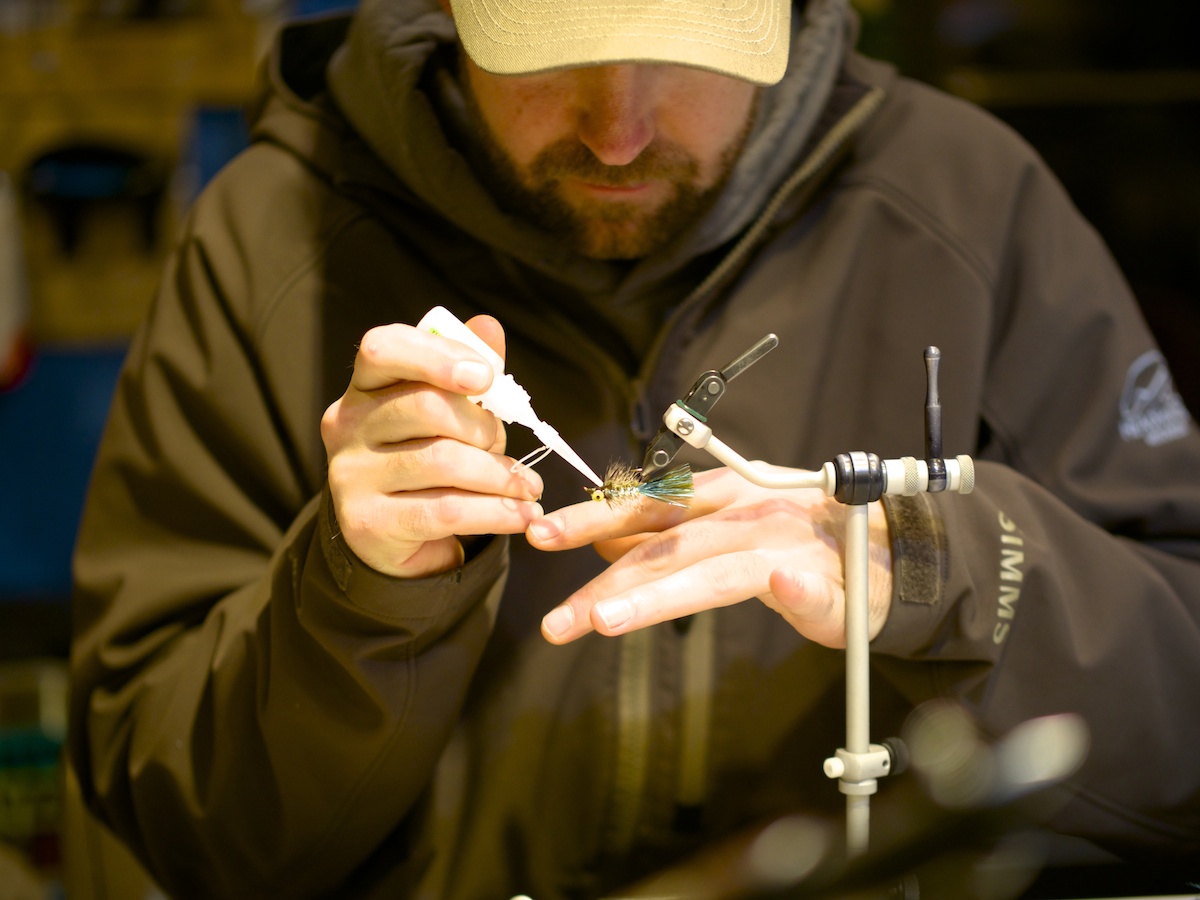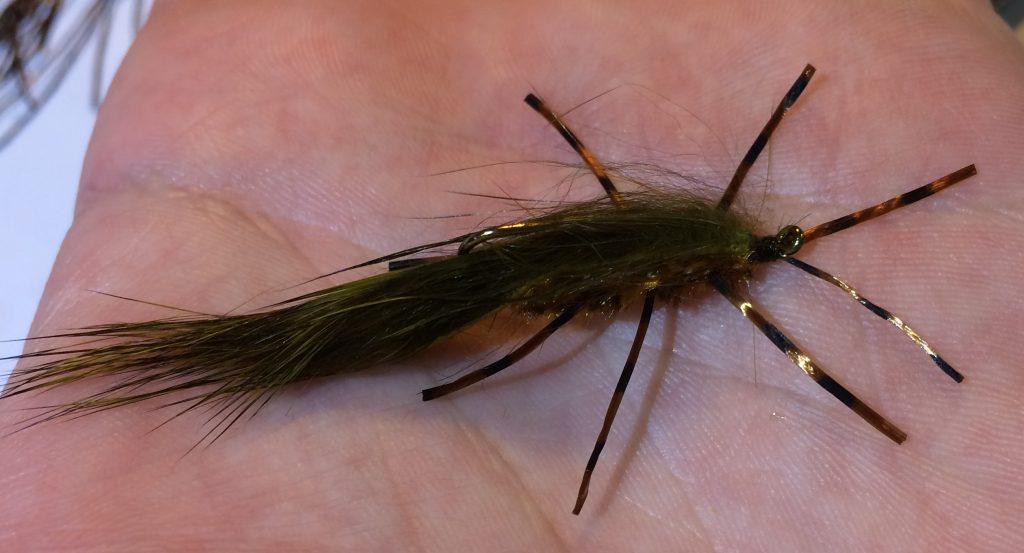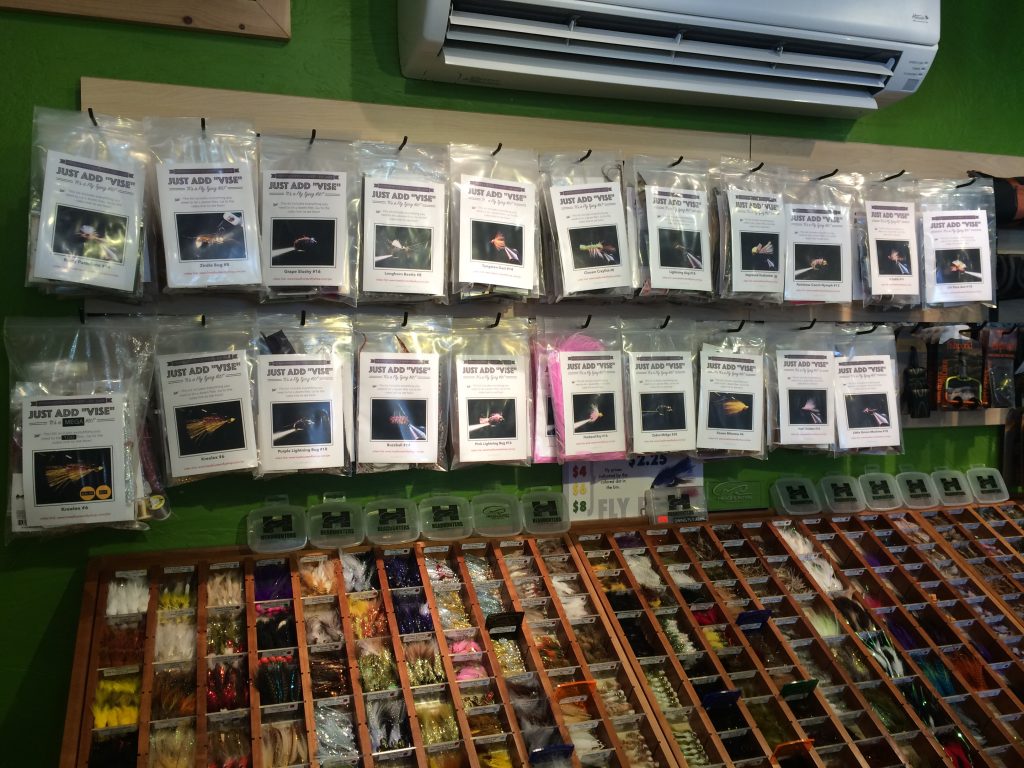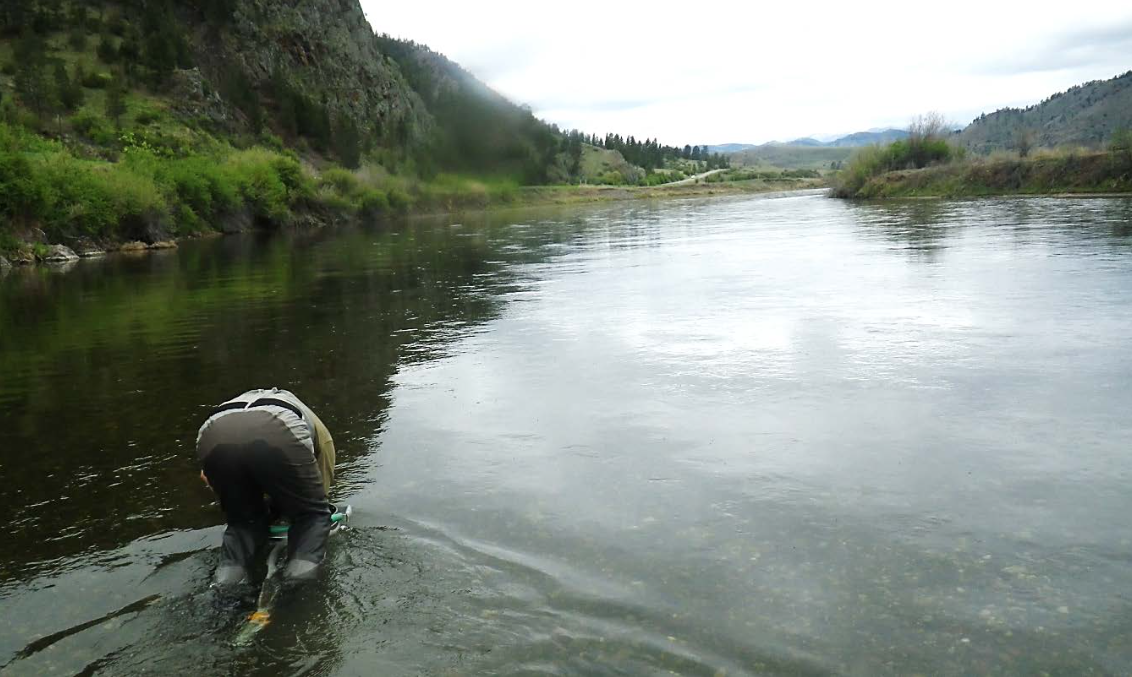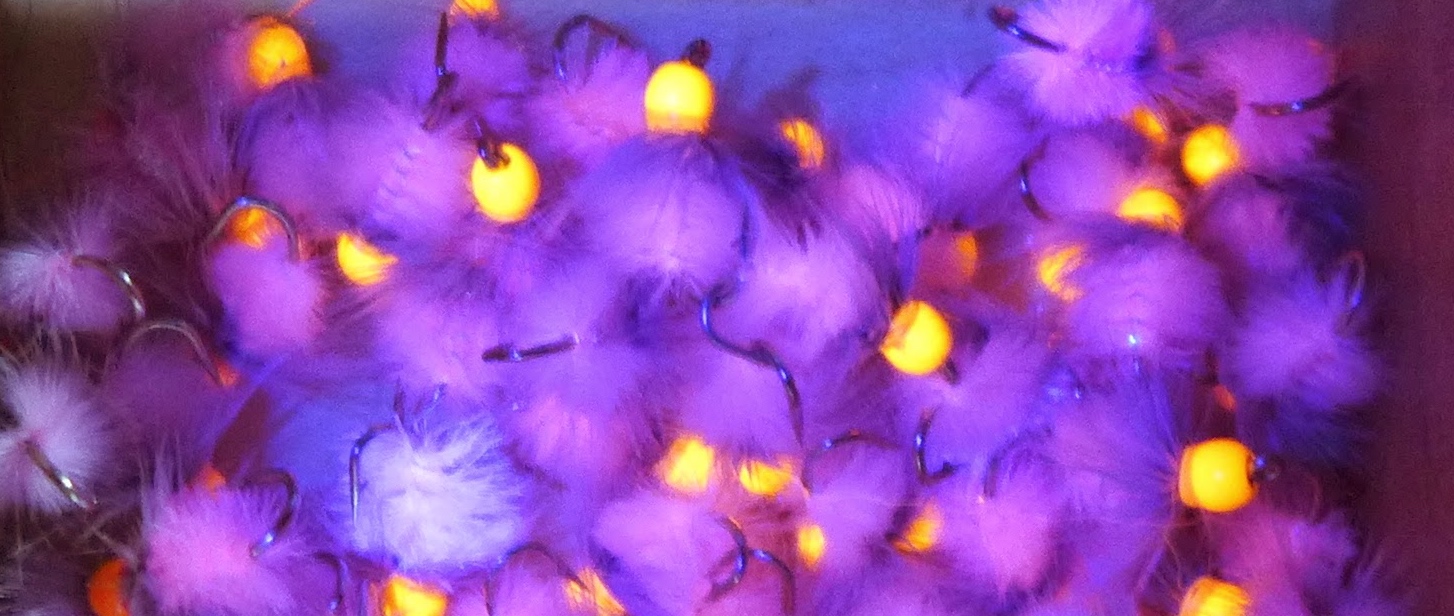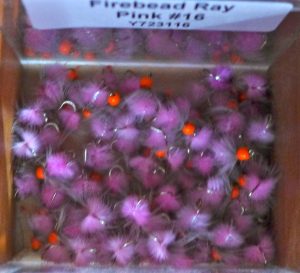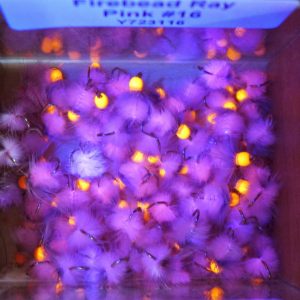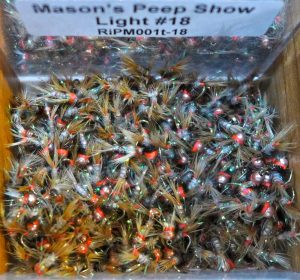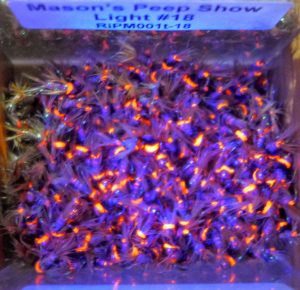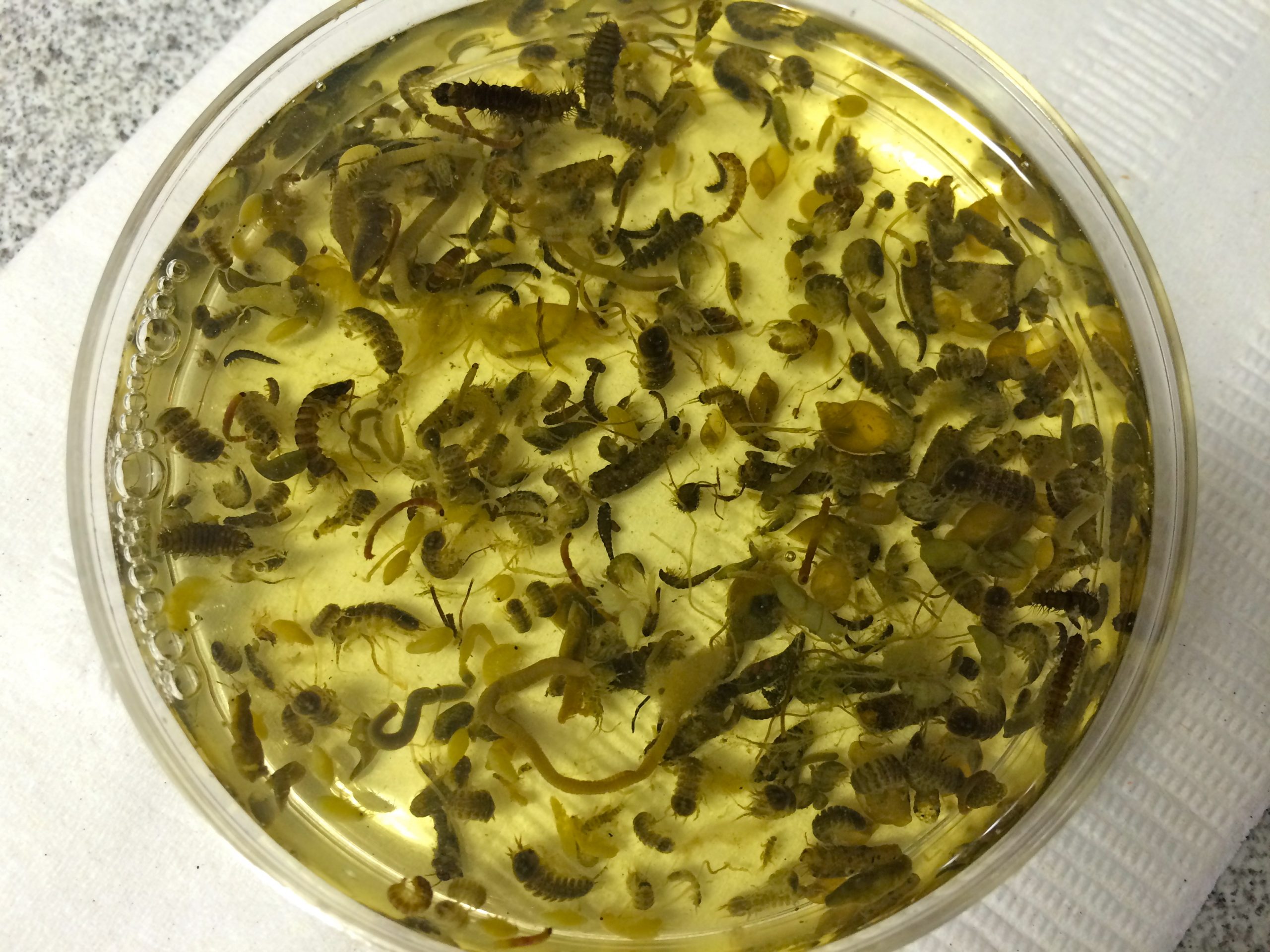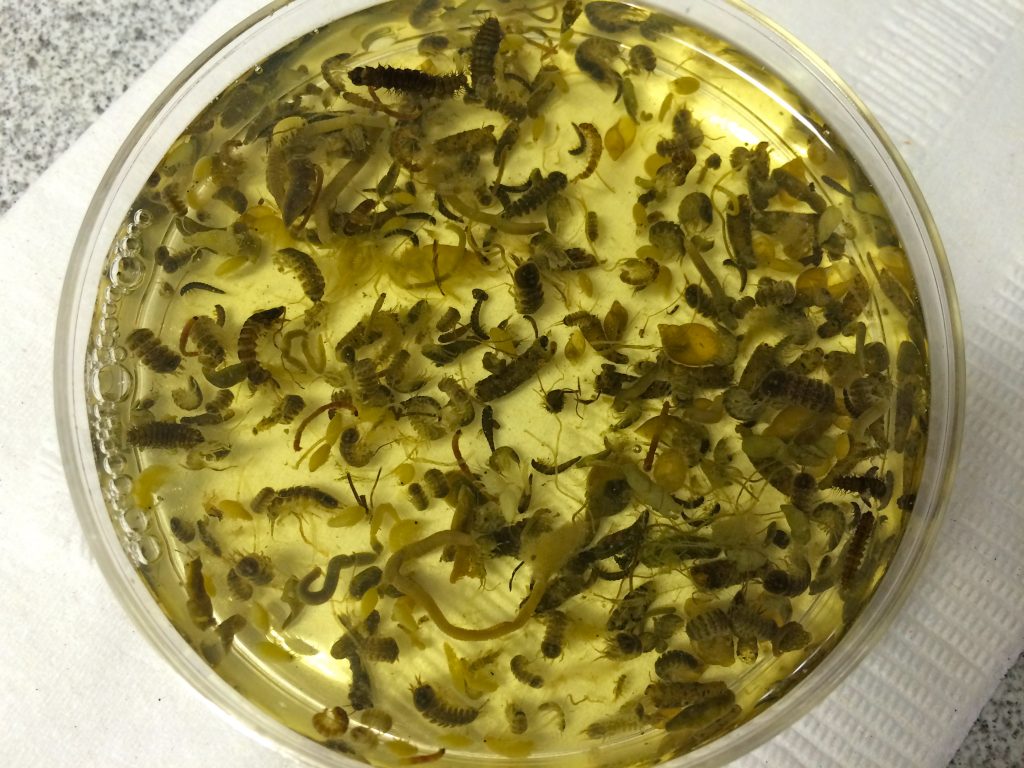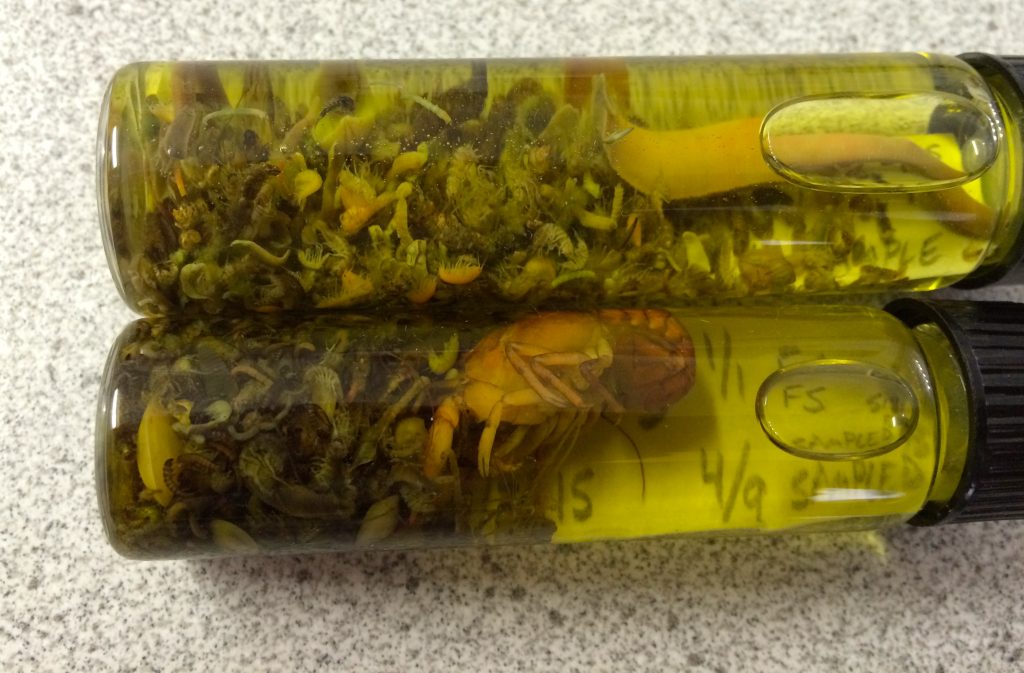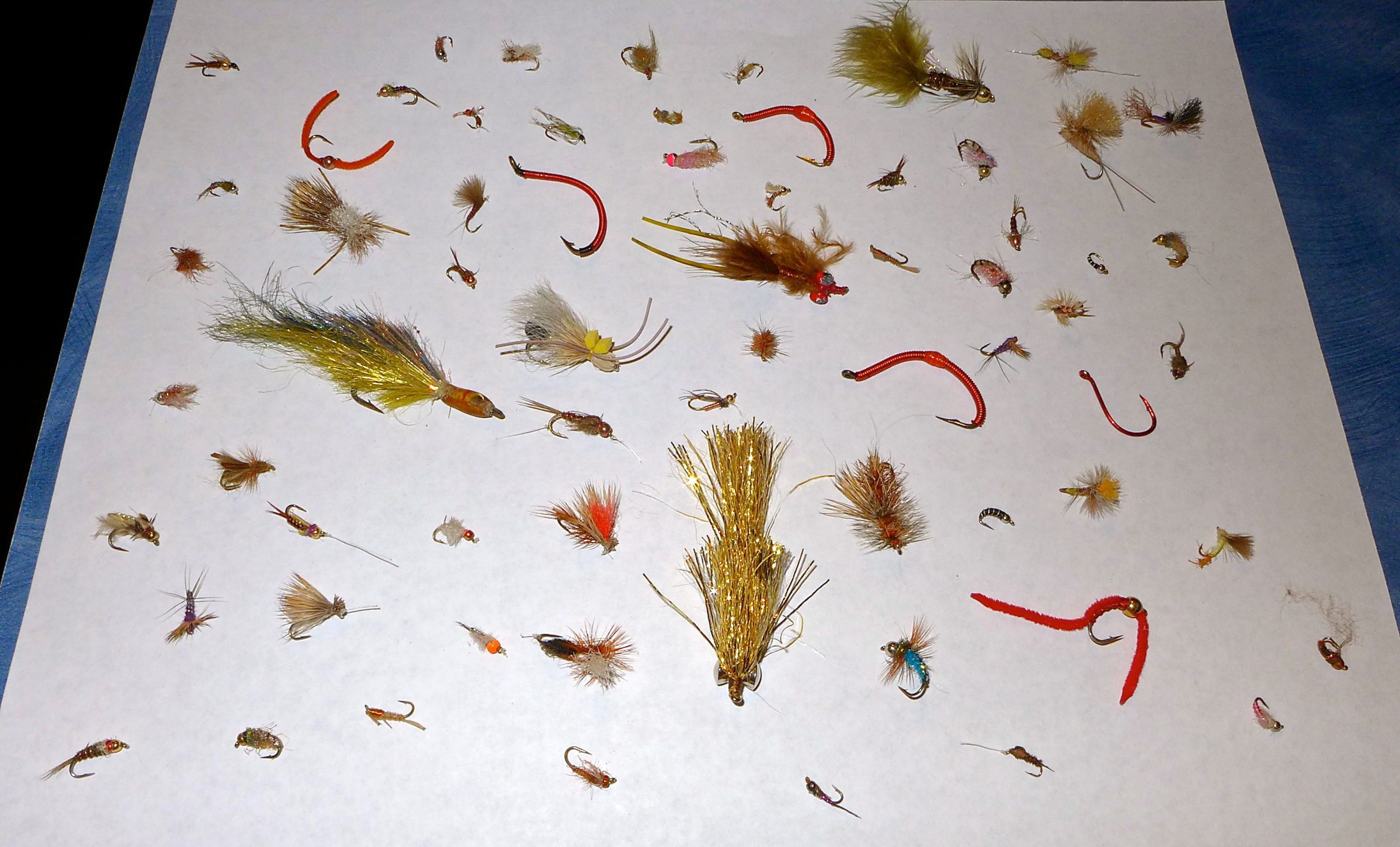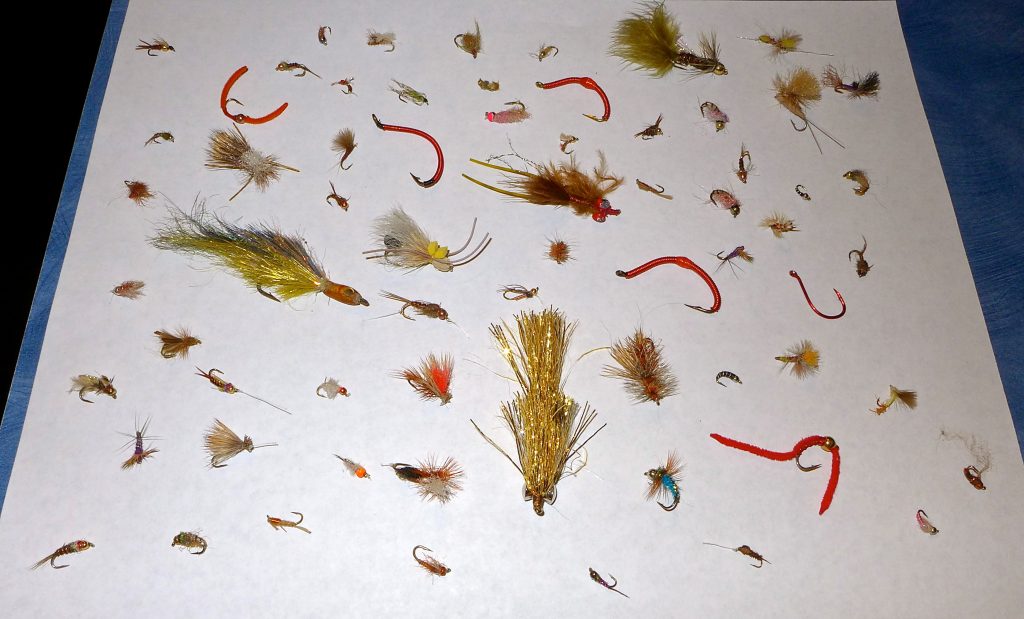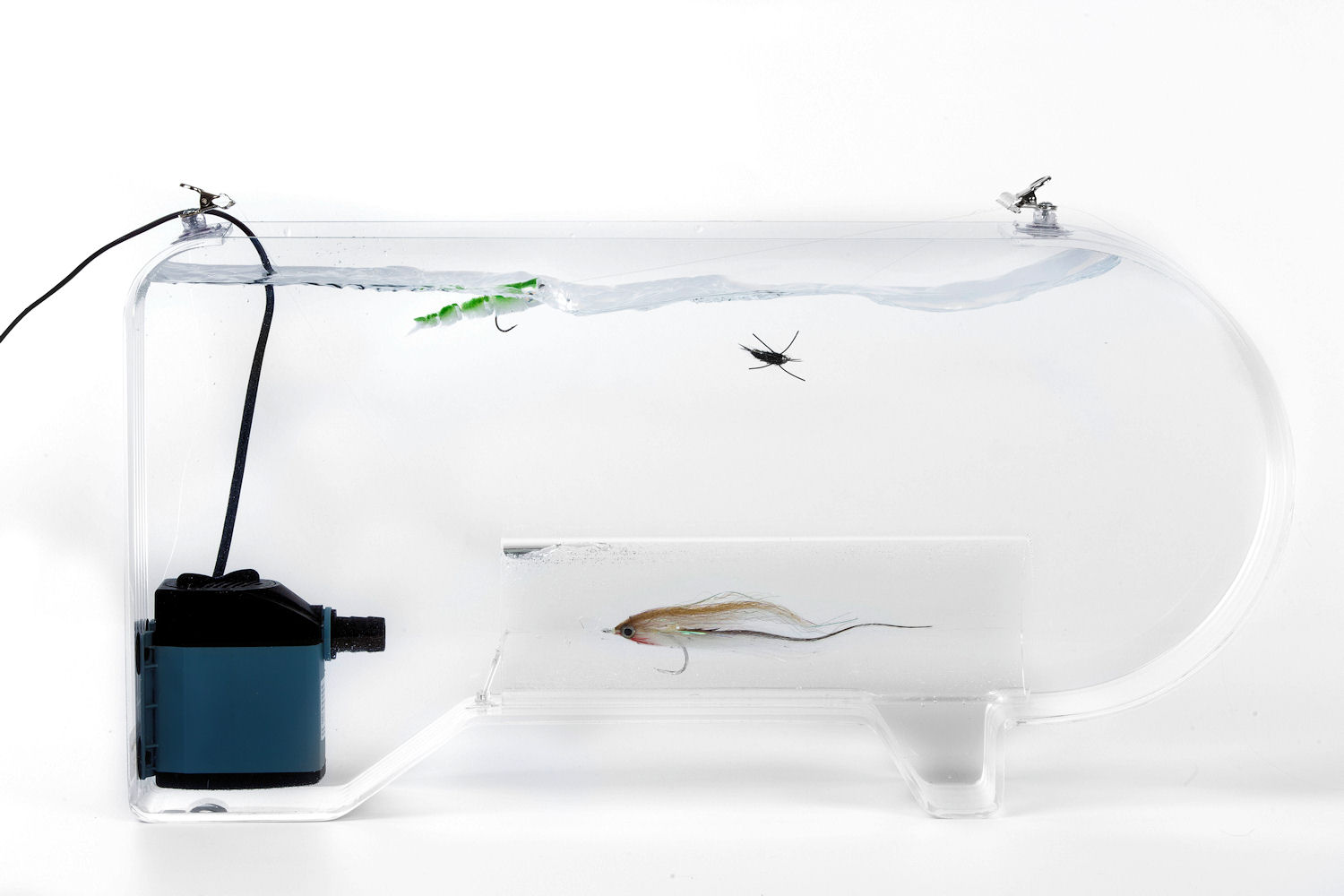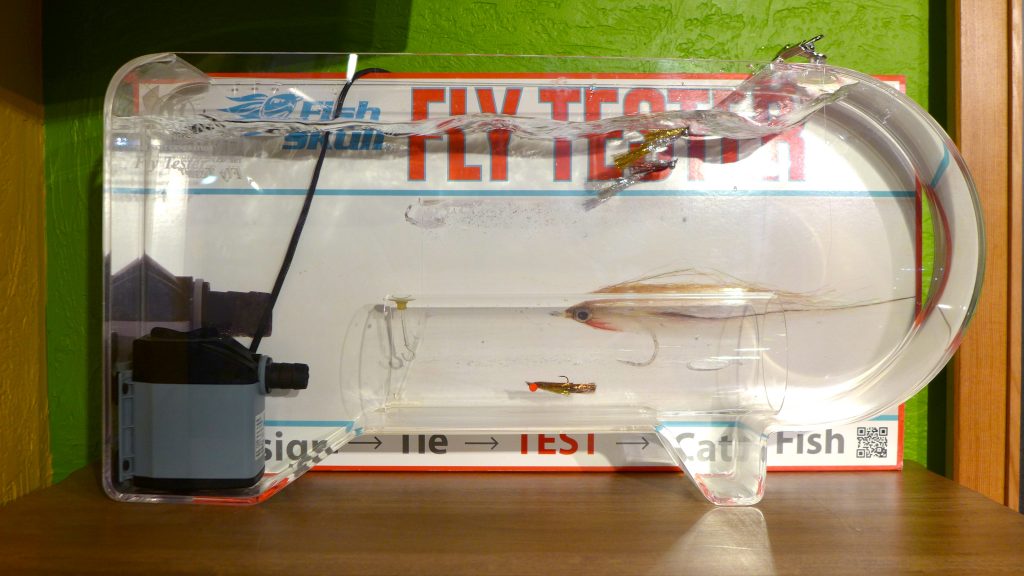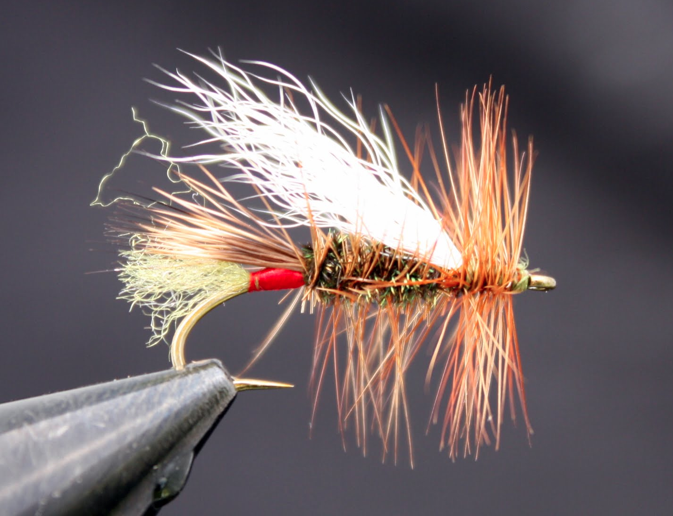[vc_row][vc_column][vc_video link=”https://vimeo.com/217420014″ video_title=”1″ src=”“https://player.vimeo.com/video/217420014“” width=”“640“” height=”“360“” frameborder=”“0“”][/vc_column][/vc_row][vc_row][vc_column][vc_column_text]This week, we collected bugs on the lower river between Pelican Point and Cascade. Today we are going to talk about what Missouri River bugs we found and how to best imitate them during periods of higher flow.[/vc_column_text][/vc_column][/vc_row][vc_row][vc_column][us_image image=”26632″ align=”center”][vc_column_text]
The Usual Players
We found a lot of scuds, sowbugs, midge larvae, pale morning dun (PMD) nymphs, blue winged olive (BWO) nymphs, and caddis larvae. This selection is very similar to the bugs that we collected in April. The Tailwater Sowbug is still king. Mayfly nymphs and midge larvae are still catching a lot of fish too.
Since last month, spring caddis have become a more prevalent food source. As a result, the UV Tan Czech Nymph as well as the Purple and Gold Bloom’s Weight Flies have increased in popularity as an alternative to the Amex or Rainbow Czech Nymph.[/vc_column_text][us_image image=”27217″ align=”center”][us_image image=”27218″ align=”center”][/vc_column][/vc_row][vc_row][vc_column][us_image image=”27219″ align=”center”][vc_column_text]
Additional Big Food Items
We found a lot of larger invertebrates this month. Leeches, aquatic worms, crane fly larvae, and crayfish were observed. These larger food items provide big meals for trout in addition to the usual small fare.[/vc_column_text][us_image image=”27214″ align=”center”][vc_column_text]At the time of this writing, the Missouri River below Holter Dam is flowing at 9,040 cfs. However, it will likely get higher in the next few weeks. At elevated flows, larger nymph patterns can be effective. Leech, worm, and crayfish imitations are all patterns that you should have in your box during these higher flows.
Below, we will talk about each of these food items and a few of our favorite flies for imitating them.[/vc_column_text][/vc_column][/vc_row][vc_row][vc_column][us_image image=”19330″ align=”center”][vc_column_text]
Leeches
The leeches we found were of the smaller variety. When stretched out, they are about two inches long. When contracted, they are about a half inch long. They are very strong and fast swimmers that swim by undulating their bodies.
These leeches can be imitated with nymphs and streamers. To mimic their wavy, undulating swimming motion, most flies are tied with some sort of bead or lead eyes to impart a jigging action to the fly.[/vc_column_text][us_image image=”27215″ align=”center”][vc_column_text]
Fruit Roll Up Leech
We have been loving the Fruit Roll Up Leech this past winter and fall. It is a great leech imitation that Ninch has got tied with a lead underbody and a tungsten bead to get it down quick. This pattern can be swung or drifted under a bobber.[/vc_column_text][/vc_column][/vc_row][vc_row][vc_column][us_image image=”27221″ align=”center”][vc_column_text]
Aquatic Worms
There are many aquatic worms in the Missouri River. These worms are similar to earthworms, but live underwater. Like earthworms, they dig and anchor themselves into the bottom of the river.
During periods of elevated flow, worms and many other bugs are more likely to be swept away from the bottom of the river and enter the drift. When they are drifting, they are available to trout as food.[/vc_column_text][us_image image=”10681″ align=”center”][vc_column_text]
Ninch’s Fish Finder Worm
Ninch’s Fish Finder Worm is a great worm pattern to fish during high water. It was recently featured on this blog.
The heavy tungsten bead helps get it down to where the trout are. It has just enough flash to get the attention of the fish and it is available in four different fishy colors.[/vc_column_text][/vc_column][/vc_row][vc_row][vc_column][us_image image=”27226″ align=”center”][vc_column_text]
Crane Fly Larvae
Crane Fly Larvae are big. The ones pictured in this blog are about three inches long. Like worms, they live within the riverbed and often get dislodged during periods of high flow.
When drifting, they are surprisingly good swimmers. They swim in a manner similar to leeches by flattening their bodies and making undulating “S” movements.
With a three inch length, they are somewhat difficult to imitate with standard nymph patterns. It would be interesting to do some experimenting with large crane fly imitations on the Missouri River. If any readers have done so, please let us know what you have found out!
If you are curious about this bug, Tim Flagler of Tightline Productions has produced an awesome video that shows a crane fly swimming as well as how to tie some effective fly patterns that imitate them.[/vc_column_text][/vc_column][/vc_row][vc_row][vc_column][us_image image=”27228″ align=”center”][vc_column_text]
Crayfish
There are many crayfish in the Missouri River. They prefer to live in areas of the river with larger boulders. Rip-rap banks are a good place to find them. While collecting bugs for this post, I found them as small as one inch long and as large as five inches long. Trout probably prefer to eat the little ones.[/vc_column_text][us_image image=”27216″ align=”center”][vc_column_text]
Bob Clouser’s Claws R Crawfish
Bob Clouser’s Claws R Crawfish is a great crayfish imitation. In the past several years this fly has surged in popularity as a high water nymph. It is often dead-drifted with another nymph pattern. Overzealous mends will jerk this pattern around and often entice strikes.[/vc_column_text][/vc_column][/vc_row][vc_row][vc_column][vc_column_text]
Don’t Be Intimidated By the High Flows
The river is big right now and will likely get bigger. However, plenty of fish are getting caught.
First and foremost, be careful while wading and boating at these flows. Remember your basic boating safety rules.
Fish deep. When bugs are hatching, some fish will be suspended, but you should be prepared to fish deep most of the time. Mark, recently discussed his deep rig here.
Don’t be afraid to fish some bigger bugs this month. In addition to scuds, sowbugs, midges, and mayfly nymphs, larger food items like worms, crayfish, leeches, and caddis larvae are now in play.
Be safe, have fun, and get out there![/vc_column_text][/vc_column][/vc_row]
